

Draft Open Space Strategy
Open Spaces for Everyone
Acknowledgement of Country
In recognition of the deep history and culture of Nipaluna (Hobart), we acknowledge the Palawa (Tasmanian Aboriginal people), their elders past and present as the Traditional Custodians of the skies, land and waterways of Lutruwita (Tasmania). We recognise that Palawa have made journeys across Lutruwita and Nipaluna for many thousands of years. We acknowledge the determination and resilience of the Palawa people who have survived invasion and dispossession and continue to maintain their identity, culture and rights.
We also acknowledge all Aboriginal and Torres Strait Islander people who live on the country of the Palawa, here in Nipaluna (Hobart), Lutruwita (Tasmania).

Key Terms
Term Definition
Beach
Biodiversity or biological diversity
The area of land between the property boundary and the low tide mark/intertidal zone.
Used to describe the incredible diversity of all lifeforms on Earth, how they interact with each other and their environment. It includes not just animals and plants, but also fungi, microbes, the genetic differences among them and the ecosystems in which they occur.
City or City of Hobart
CPTED
Dual recreation park
Evapotranspiration
Landscaped areas
Refers to the local government organisation that is Hobart City Council (City of Hobart).
Crime prevention through environmental design.
An area of open space where organised sport has priority but that is available for unstructured sport/social games and other informal use such as dog walking and general recreation/play at other times. Sporting facilities will be subject to a different strategy but these spaces are included in this strategy due to the contribution they make to the City’s open space network.
Describes the part of the water cycle which removes liquid water from an area with vegetation and into the atmosphere by the processes of both transpiration and evaporation.
Small areas generally adjacent to a footpath that contain plantings. They are typically larger than a standard nature strip but smaller than a park
m2 Square metres.
Nature strip
Open space
Public land between the pedestrian footpath and the back of the street kerb, between the footpath and property boundary or between the road edge and kerb.
Land owned or managed by the City of Hobart that is set aside primarily for leisure, active or passive recreation, nature conservation, other public enjoyment, or gathering. This includes beaches, bushland and public parks, sportsgrounds.
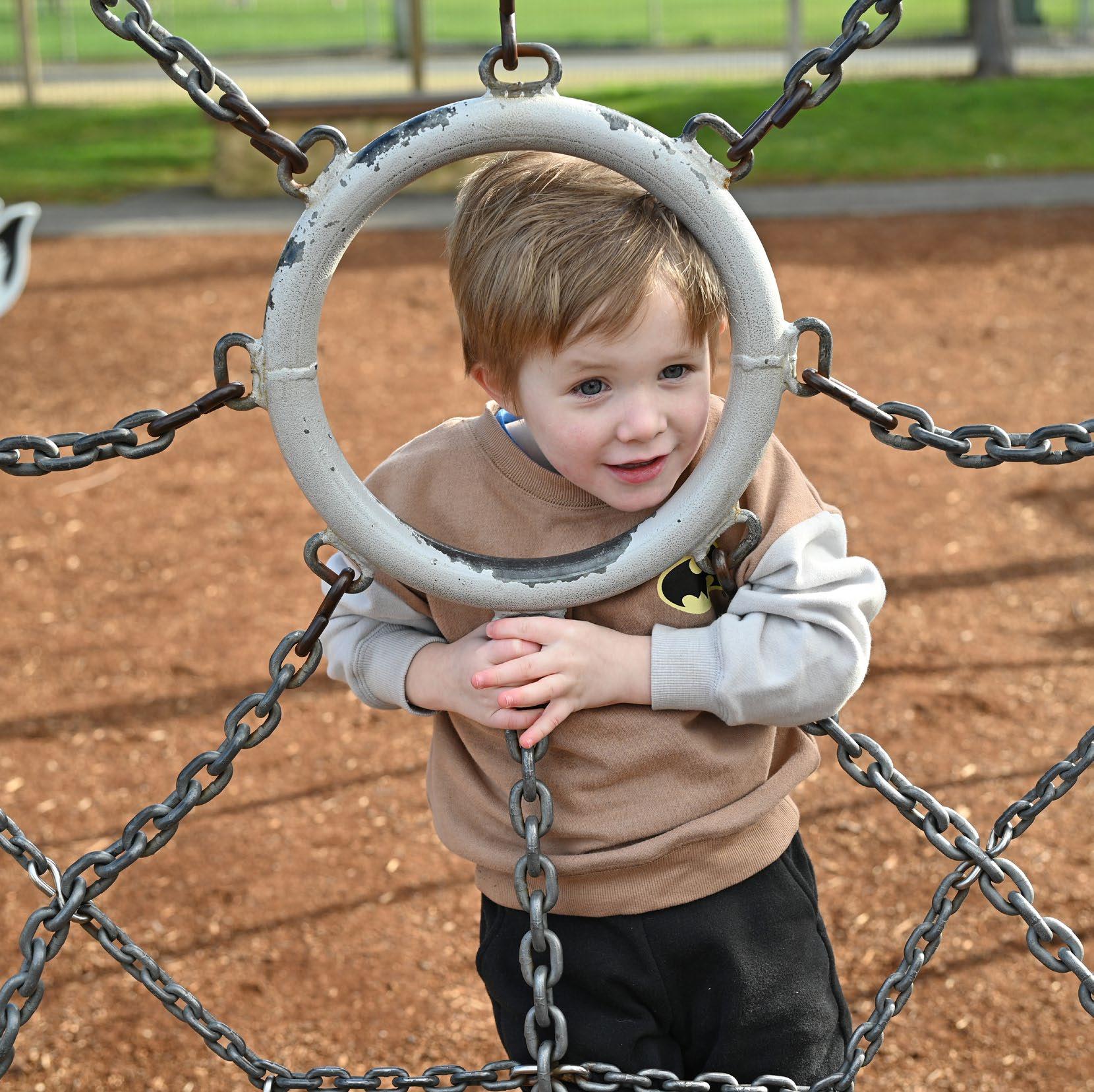
Recreation
Urban ecological restoration
An overarching description for every pastime or exercise undertaken by people in open space. It includes structured sport, unstructured sport, active and passive recreation, fitness activities and play.
Restoration of ecosystems to the point where nature is able to take care of itself.
Message from the Lord Mayor

I am delighted to introduce the City of Hobart’s first draft Open Space Strategy, a comprehensive plan aimed at enhancing and preserving the natural and recreational areas that make Hobart such a special place to live.
Public open spaces are vital for community wellbeing, whether we use them to get some exercise or peace and quiet, connect to nature, walk the dog, play in play spaces or socialise with our friends, family and neighbours.
The City manages over 4600 hectares of bushland for recreation and conservation, and 80 hectares of parks and reserves for active and passive recreation.
Hobart’s open spaces are also essential components of our community fabric. They provide venues for recreation, relaxation and social interaction, and serve as natural habitats for our local wildlife. As our city continues to grow and evolve, it is crucial that we prioritise the protection of these spaces to maintain the wonderful lifestyle that Hobart offers.
This draft strategy will guide the provision and management of existing open spaces and the delivery of new and improved open spaces to meet the needs of Hobart’s residents and visitors, both now and into the future. It considers the challenges we will face over the next decade and includes actions to manage them.
The strategy sets out how we will work with traditional owners to acknowledge country in our open spaces and with all local community groups to maintain the places that provide Hobart with its unique identity, character and sense of place. We will aim to ensure equity of access to open spaces and we will also seek opportunities to transform currently underutilised sites close to the city, while acknowledging the current fiscal climate.
Hobart’s bushland areas and urban parks will have an important role in mitigating the impacts of climate change, while continuing to be natural havens for people and animals.
I encourage everyone to engage with this strategy, share your insights and participate in the stewardship of our open spaces. They belong to us all, so let’s take good care of them.

Cr Anna Reynolds LORD MAYOR


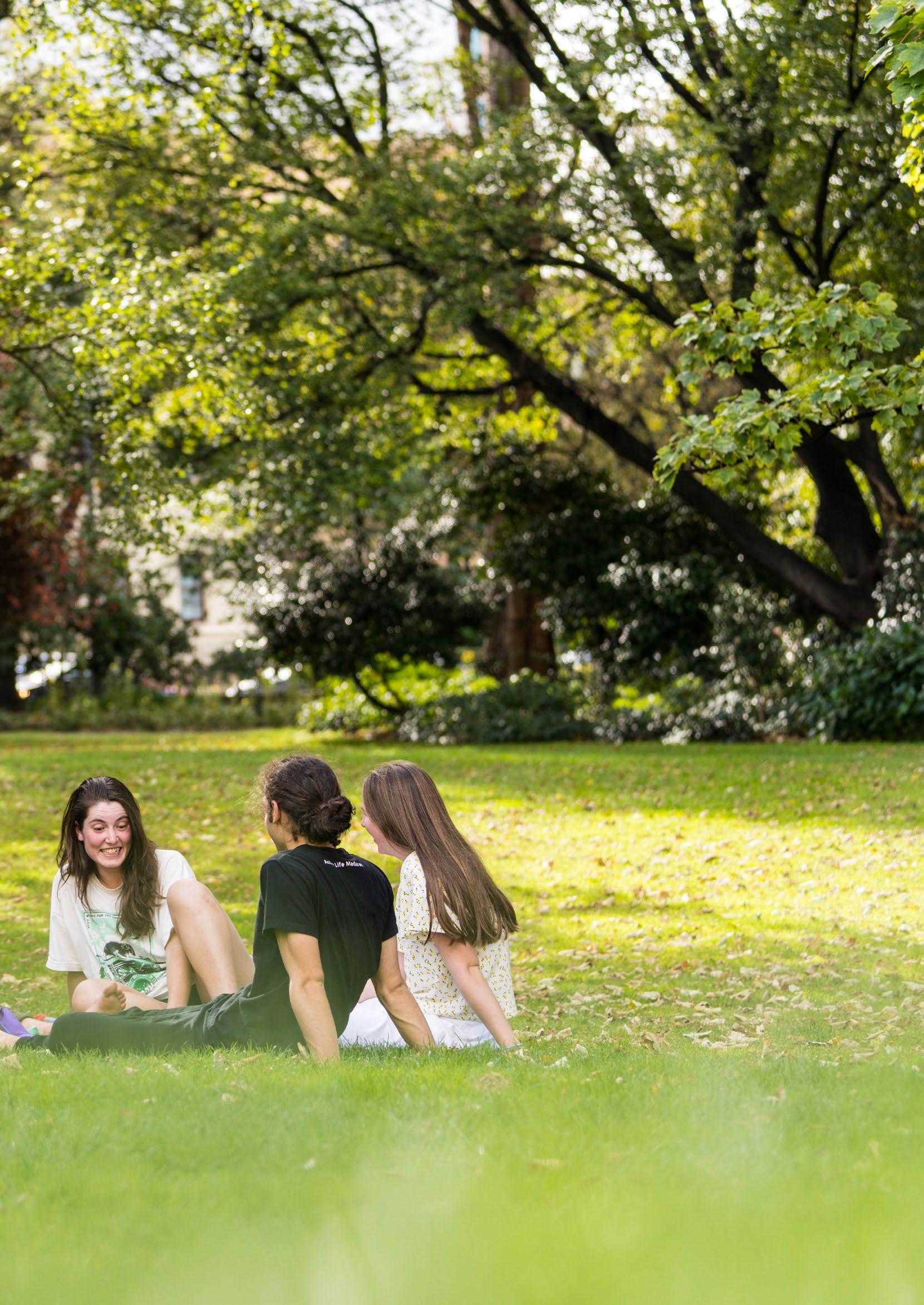
Introduction

Why are we developing a strategy?
The development of an open space strategy for Hobart is an outcome of the City of Hobart Capital City Strategic Plan 2023, which reflects the community’s values and aspirations in the document Hobart: A Community Vision for Our Island Capital.
The City of Hobart’s Open Space Strategy 2025-35 will guide the provision and management of existing open spaces and the delivery of new and improved open spaces to meet the needs of Hobart’s residents and visitors, now and into the future.
What do we mean by open spaces?
For the purpose of this strategy ‘open space’ refers to: land owned or managed by the City of Hobart that is set aside primarily for leisure, active or passive recreation, nature conservation, other public enjoyment or gathering. This includes beaches, bushland, public parks and reserves.
Scope of strategy
It is important to note this strategy excludes most of the ‘business as usual’ work done to maintain Hobart’s open spaces on a day-today basis.
The strategy excludes restricted access sportsgrounds, for example North Hobart Oval and New Town Sports Precinct, as sporting facilities will be considered during development of the Greater Hobart Sport and Recreation Infrastructure Study.
The strategy is supported by an implementation plan that details when we will implement actions to achieve the principles and goals of the strategy. The implementation actions in the adopted strategy will direct our annual priorities for open space and we will ensure we monitor our progress.
Why are our open spaces important?
Hobart’s beaches, bushland reserves and parks are places for activity, contemplation, gathering and play. These open spaces are home to an abundance of native wildlife, plants, woodlands, forests and grasslands. They are places of cultural and heritage significance and provide a wealth of
recreational and tourism opportunities. Open spaces help connect communities, they are where we go to socialise with family and friends, take a moment from busy lives to enjoy quiet time in nature, eat lunch, cycle, walk, play games, relax and participate in community activities and volunteering.
Open spaces are vital to a healthy, thriving community and a city. Under this strategy Hobart’s open spaces will:
• Continue as places for recreation and leisure for our residents and visitors of all ages and abilities.
• Always be havens for nature in bushland areas and in our urban parks.
• Encourage the community to be outside, participate in activities and improve their health and wellbeing.
• Play an important role in mitigating the impacts of climate change through the sequestration of carbon, by cleaning and cooling the air and water, and by absorbing heavy rainfall.
Under this strategy we will work with traditional owners to acknowledge Country and with all local community groups to maintain the places that provide Hobart with its natural identity, character and sense of place.

Our Vision
The City of Hobart’s vision is described in Hobart: A Community Vision for our Island Capital. Hobart breathes.
Connections between nature, history, culture, businesses, and each other are the heart of our city.
We are brave and caring. We resist mediocrity and sameness.
As we grow, we remember what makes this place special.
We walk in the fresh air between all the best things in life.
The community vision is in three parts: identity statements, the eight pillars, and the vision statement.
The identity statements are the stories that summarise the values and special qualities community members and stakeholders want to see reinforced, developed, or improved, and the pillars represent the aspirations for major aspects of life in Hobart.
The vision is not based on concrete policies or actions, rather it outlines the kind of future people would like to see for Hobart. It articulates what people value about Hobart today and what they aspire to for its future.
The City of Hobart Open Space Strategy aims to deliver outcomes that align with these four pillars.
Aligned with four pillars

Sense of Place
We are a city of unique beauty, environment, heritage and people, built on a shared sense of ownership, pride and wonder. This spirit of place has been shaped by Tasmanian Aboriginal people for tens of thousands of years and continues to be shaped by all who have called Hobart home. It is developed jointly by community, private enterprise and government, valuing and enhancing our Hobart identity.


Community Inclusion, Participation and Belonging
We are an island capital city that is socially inclusive and coherently connected, whose people are informed, safe, happy, healthy and resilient.
Movement and Connectivity
We are a city where everyone has effective, safe, healthy and environmentally friendly ways to move and connect, with people, information and goods, and to and through spaces and the natural environment. We are able to maintain a pace of life that allows us to fulfil our needs, such as work, study, business, socialising, recreation, accessing services, shopping, entertainment and spending time with loved ones.

Natural Environment
We are a city whose people see ourselves as part of a beautiful and unique natural environment, from the mountain to the river, which embraces us and shapes our identity. We are proud custodians and advocates, ensuring resources are appreciated rather than wasted, supporting biodiverse ecosystems in honour of past, current and future generations.
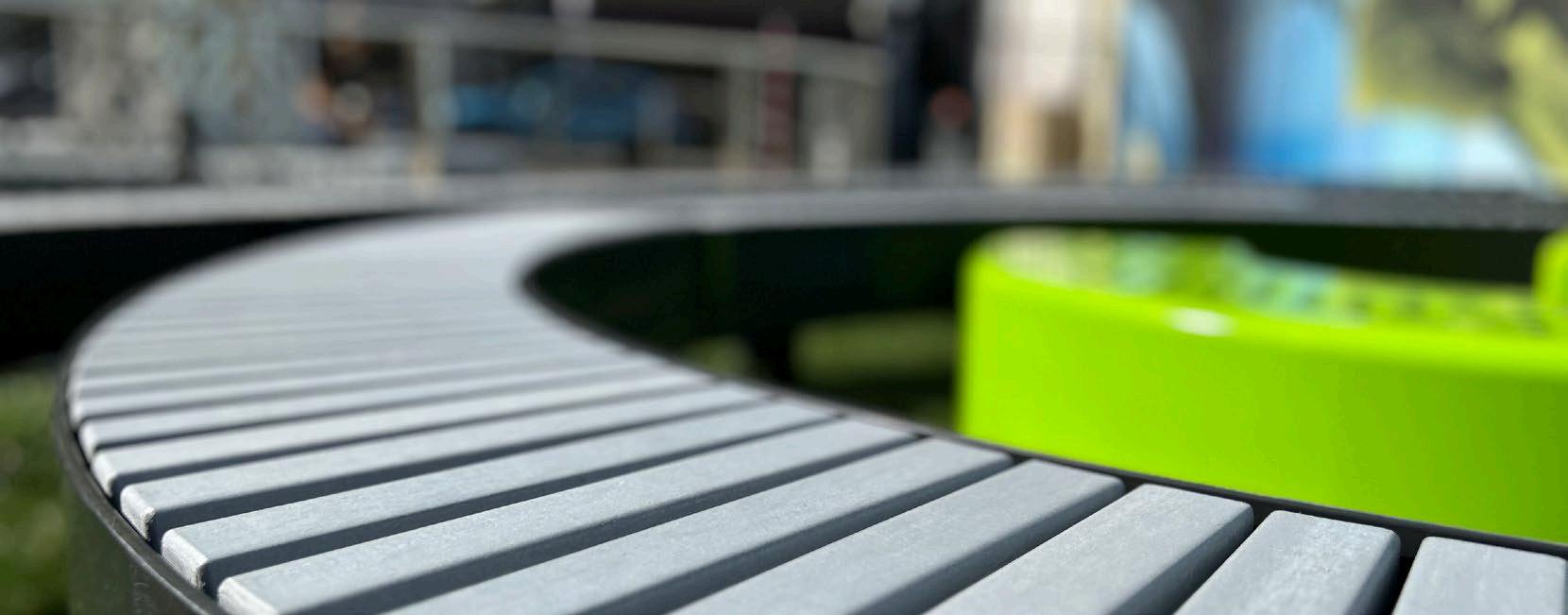
A community vision for our island capital
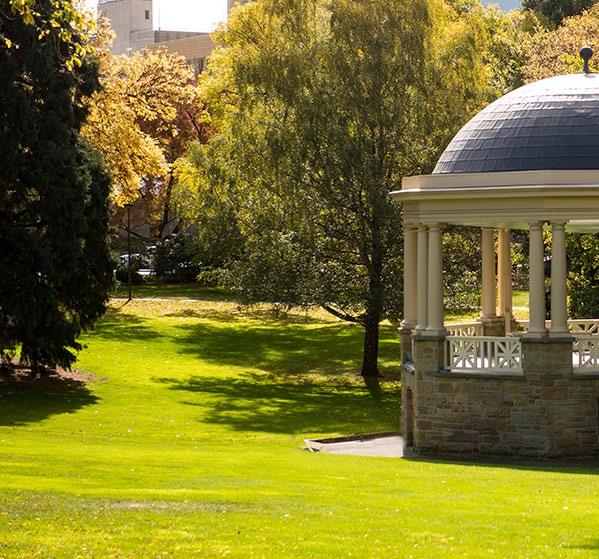
CAPITAL CITY STRATEGIC PLAN 2023
DRAFT OPEN SPACE STRATEGY
influencing documents
• Southern Tasmania Regional Land Use Strategy 2010-2035
• Tasmanian Open Space Policy and Planning Framework aligned with
• City of Hobart Street Tree Strategy
• City of Hobart Biodiversity Action Plan
• Bushfire Management Strategy
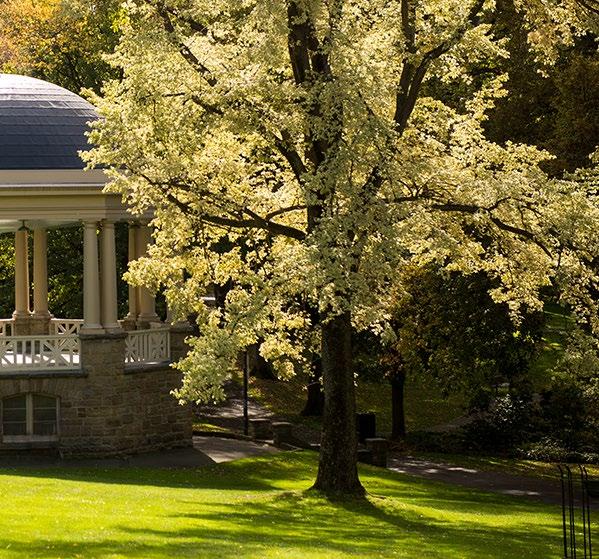
• 30-year Greater Hobart Plan
• 2040 Climate Ready Hobart Strategy
• City of Hobart Transport Strategy
• Central Hobart Plan
• City Economy Strategy
Our Open Space Vision
Our open spaces are balanced for people and nature, they enhance the health and wellbeing of current and future communities and help mitigate the effects of climate change.
Principle 1: Accessible and Inclusive
Increasing the amount of accessible and inclusive open spaces for people of all abilities, ages and cultures to use them for recreation and leisure.
2. Nature Positive
Hobart is uniquely entwined with its natural environment. Our natural surroundings define the character and identity of our city.
3. Cultural
Our open spaces are welcoming locations for ideas to generate, somewhere to celebrate and places to experience art and performance.
4. Health and Wellbeing
Open space provides significant mental and physical health benefits by providing a place to exercise, a space for contemplation and relaxation in natural surrounds, and opportunities for community interaction.
5. Quality and Quantity
The continued provision of open space of sufficient quantity and quality to meet the needs of residents and visitors.
Goal 1.1 Open spaces that can be accessed and enjoyed by everyone in the community.
Goal 1.2 Welcoming for people of all ages.
Goal 1.3 Safe Places.
Goal 2.1 Nature is secure and flourishing.
Goal 2.2 Resilient open spaces mitigate climate change impacts.
Goal 2.3 Nature threads through our city.
Goal 3.1 People can engage with Tasmanian Aboriginal culture in open spaces.
Goal 3.2 Contemporary cultural heritage.
Goal 3.3 A place for gatherings and social events.
Goal 4.1 Our open spaces benefit human health.
Goal 4.2 Spaces for connection and contemplation.
Goal 4.3 Facilitating active travel.
Goal 5.1 Meet the needs of residents and visitors now and into the future.
Goal 5.2 Our open spaces are carefully planned.
Goal 5.3 New and upgraded open spaces utilise sustainable design principles.

Why do we need open spaces?
Access to open spaces, which include urban and suburban parks, as well as bushland and coastal areas, is fundamental to quality of life with proven benefits for human health, wellbeing and community cohesion.
Open spaces are sanctuaries for native plants and animals, and can act as stepping stones, helping wildlife move through urban landscapes. They contribute to a successful local economy.
Social wellbeing
Open spaces provide places in which people can take part in recreational activities, exercise, relax and find a place to be with nature.
Outdoor exercise makes us physically healthier. It also makes us mentally healthier and helps us feel happier through its effects on the brain. Our beaches, parks, playgrounds and walking tracks create opportunities for us all to exercise, socialise, relax and feel part of a community while accessing these health benefits.
For children, physical and mental development is enhanced by playing and learning in outdoor open spaces such as city parks and in bushland reserves where they are surrounded by plants and trees. Older people benefit from open spaces through improved physical health and social wellbeing - open spaces provide opportunities for social interaction and connection that reduce feelings of loneliness and social isolation.
In some countries, time spent in open spaces is prescribed by medical professionals to help people heal.
Environmental benefits
Open spaces are strongholds for biodiversity and can encompass entire ecosystems, geological and hydrological features, and the lifeforms that are part of them, including native and non-native trees and shrubs, grasses and wildlife.
Our urban parks bring the environment into the city and are a haven for birds, insects and small mammals.
In urban areas, natural open spaces help reduce risks of climate change driven impacts by:
• Absorbing and retaining heavy rainfall.
• Reducing heat by providing shade and increasing evapotranspiration resulting in areas that are significantly cooler than surrounding hard infrastructure.
Economic benefits
Hobart’s open spaces attract tourists and visitors whose spending provides economic benefit to local businesses who employ local people.
Our urban parks are frequently used for open air events. The hiring out of these parks provides the opportunity to enhance recreation and visitor experience as well as

a source of income for the City of Hobart that helps fund the management and maintenance of all our open spaces.
It is estimated that approximately 500 000 interstate and international tourists visit Kunanyi/Mt Wellington each year, bringing much needed wealth to Tasmania and Greater Hobart, but funding
Case Study
for the infrastructure on the mountain is predominantly shouldered by the City of Hobart and the Hobart’s residents and businesses through rates and charges.
In 2024 the Tasmanian Government began a strategic review of Kunanyi/Mt Wellington.
Time spent in nature
A recent study in the United Kingdom looked at the monetary value of providing equivalent health benefits to time spent in nature as equivalent to £356 ($690) an adult1. In Belgium, it was found that children with more natural, open space near their homes have significantly stronger bones, potentially leading to lifelong health benefits. Scientists found that children living in places with 20-25 per cent more natural areas had increased bone strength that was equivalent to half a year’s natural growth2
What we heard through community engagement
In March 2024 the City of Hobart carried out an open space survey to find out what the people of Hobart and surrounding suburbs love about our open spaces.
We received a significant response to the survey, with more than 1400 visits to the Your Say Hobart website. The survey reached nearly 10 000 people through social media and received more than 300 survey responses from the community. Below is a sample of those responses.
People love Hobart’s open spaces
Through the survey we heard that people love Hobart’s open spaces. Below is just a sample of the feedback we received.
‘Safe open space is essential for connectedness. And if the space is green and relaxed, and not grey and noisy, we will all be out there more, and happier and healthier for it.’
‘We have a lovely mix of large and small spaces.’
‘I treasure them and the walking paths in them.’
‘I love walking through Knocklofty since it’s been done up!’
‘We are lucky to have them.’
‘Love them all and appreciate them immensely. Great for both mental and physical wellbeing.’
‘We are immensely lucky to have an incredible variety and quality of nature and open spaces within easy access of anywhere in the city.’
‘This diversity of birds, flowers and insects is a subtle yet pleasurable attribute in Hobart’s green spaces. This wildlife, especially the bird sounds, creates a sense of tranquility and a shared living environment with nature. So vital for a healthy city.’
‘Keep up the good work. Hobart’s green open spaces are vital in making Hobart a great place to live and visit.’
‘I love them!!!! It is the best part of this city.’
‘They are a major reason why we live in Hobart.’
‘They are incredibly important to provide a sense of community.’
‘Thank you for providing a range of parks and allowing dogs. Green space is important for our physical and mental health and wellbeing, plus we can always learn from the natural environment.’

But we can do better
‘Protect them from graffiti, encroachment and commercialisation.’
‘There aren’t enough of them.’
‘The street network should be part of providing important green links between parks... The journey to the open space could be as rewarding as the destination.’
‘I am scared of dogs and many dog owners cannot control their dogs but let them off leash anyhow and there is much dog poo, but no controls and/or little restrictions.’
‘Build more off-lead dog parks and get them off sportsgrounds.’
Community ideas for better open spaces
‘I do enjoy some arts events in open spaces now and then. I also love seeing sculpture within parks - using art to interpret and tell stories of nature.’
‘Street trees so it’s a nice walk to get to the open green space. Green city streets.’
‘…put more signage up about the significance of green spaces - their role in climate change - their role in keeping cities cool.’
‘More traffic calming measures on roads around and through the reserves, especially Cornelian Bay.’
‘Toilets at Knocklofty Reserve. More signage about the value of local protecting native biodiversity.’
‘Fenced, off-lead dog areas and play equipment in dog friendly spaces.’
‘More native plant replacements along the rivulet track; eg. willow removal and replacement with eucalypts. A little playground on the rivulet track next to Waratah nursery would be amazing.’
‘Deciduous trees that provide shade in summer and light in winter.’
‘Green spaces with lots of tree cover’
‘More education about the endemic animal and plant species.’
‘If Hobart residential areas are intended for infill development, there needs to be a lot more quality green open spaces.’
Summary
Two thirds of respondents were from Hobart and one third from neighbouring local government areas, showing how popular our open spaces are with people from outside of our city.
Most people visit Hobart’s open spaces to exercise, or relax and connect with nature, improving their health and wellbeing.
The overwhelming majority of people (more than 90 per cent) rated protection of environment and habitat and connection to nature as the most important elements of open spaces.
The top three favourite open spaces were Queens Domain, Kunanyi/Mt Wellington, Hobart Rivulet Park.
Community feedback has helped shape the principles and develop actions.

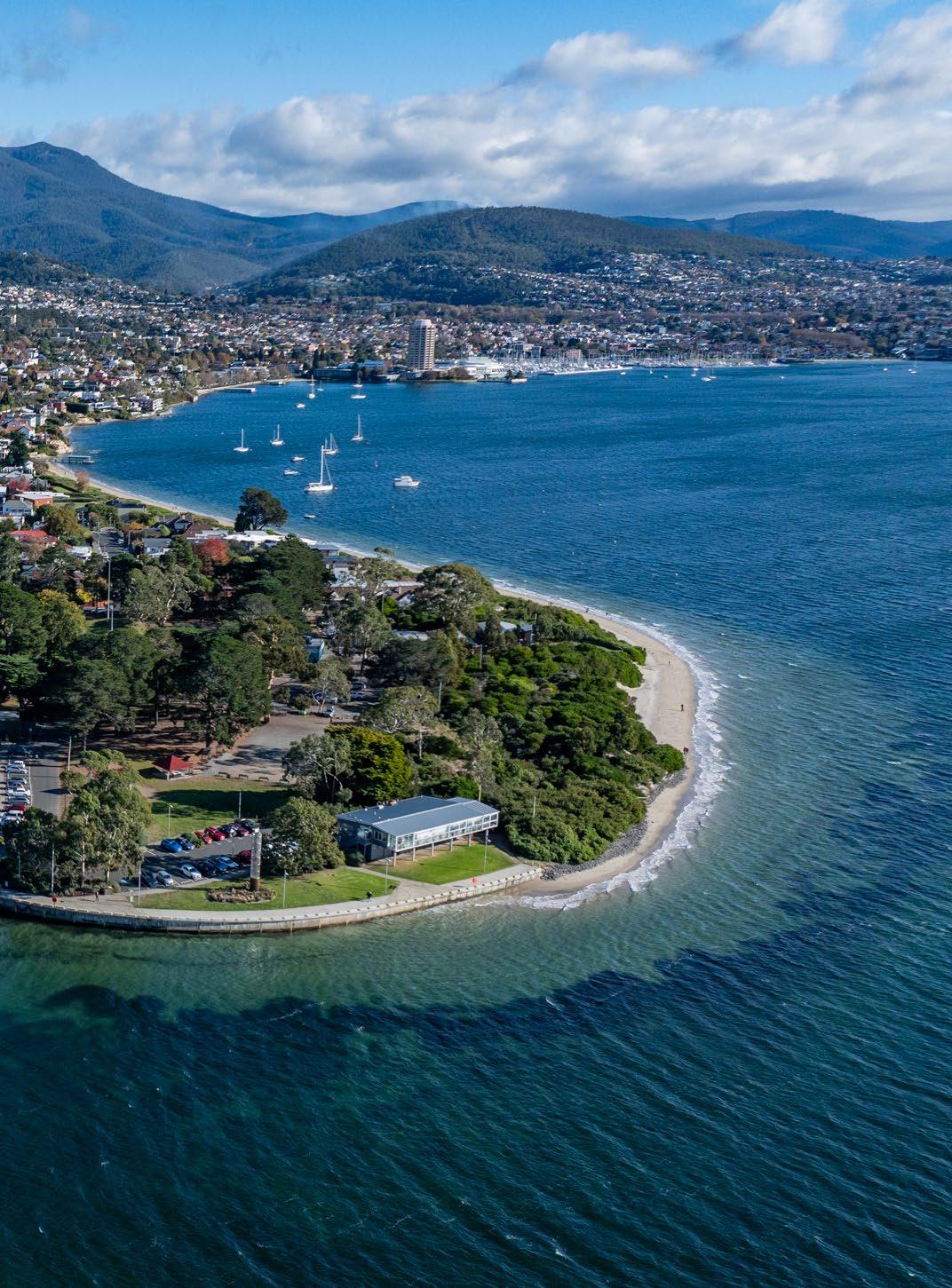
Population and open spaces
Hobart’s open spaces change dramatically in character as you move out from the city centre. Our CBD is marked by beautifully-curated city parks full of cultural and historical landmarks. Our suburban parks tend to focus on areas for activity and play – picnic and barbecue areas, recreational spaces including cycleways, walking and running tracks.
Further out, in suburbs such as Fern Tree and Mt Nelson, our open spaces begin to reflect the natural environment and are dominated by heavily forested bushland reserves that are protected for their natural values.
To properly manage these different types of open spaces we need to understand the dynamics of the communities that use them, which of the available open spaces these communities have access to, and whether or not we can expect a significant change in the local population and demographics.
In 2024 Hobart’s estimated residential population was 55 9773. By 2038, Hobart’s population is expected to increase by 3164 people to 59 128 residents4.
When we look at Hobart’s open spaces by suburb it becomes clear that some residents have more access to open space than others. And when we look at which suburbs are expected to see an increase in population over the next 14 years – the inner urban suburbs of Hobart and North Hobart – we can also see that currently these suburbs have the lowest amount of open space in Hobart per resident.
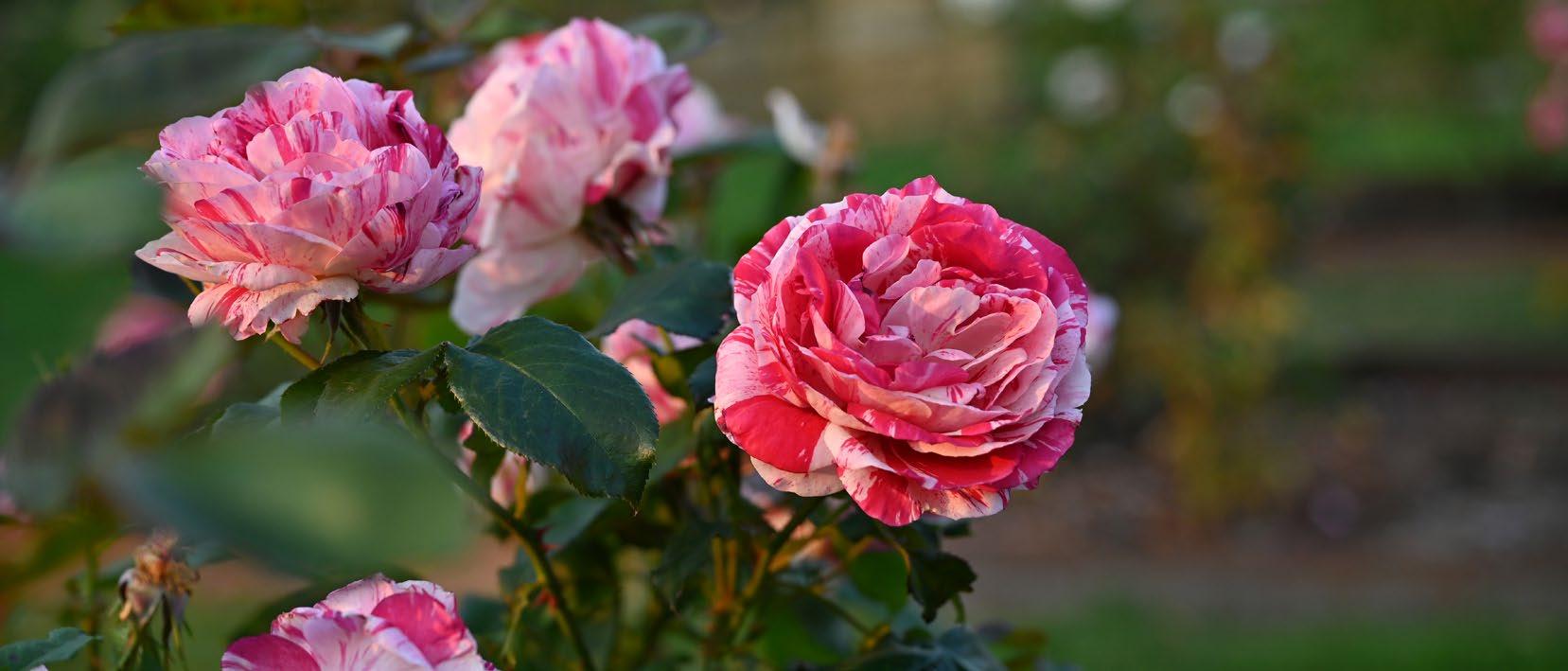
3. Australian Bureau of Statistics, estimated resident population and components, Local Government Areas.
2024 Tasmanian

250km of tracks and trails
100+ parks and reserves
At a Glance
52 playgrounds
20 000 trees, not including bushland areas
Existing open space network
The City of Hobart’s open space, excluding nature strips and landscaped areas, can be categorised into:
• Bushland areas* – 4600 hectares or 46 000 000 square metres (8267 m2 per resident).
• Parks – 71.1 hectares or 711 000 m2 (13 m2 per resident).
• Dual Recreation Park – 13 spaces totalling 26.4 hectares in size or 264 000 m2 (4.7 m2 per resident).
Public recreation space available when sport is not being played.
* Includes Wellington Park.
HOBART: FIVE YEAR AGE GROUPS
Australian Bureau of Statistics, Census of Population and Housing 2021. Compiled and presented by .id (informed decisions).
Tasmania has the oldest population of any state or territory in Australia. Our median age is 42 – 3.5 years above the national average age of 38.55
In Hobart, the 2021 Census provides our most recent age breakdown. And while we have one of the youngest populations in Tasmania – median age of 37 – we also have almost as many people aged under 20 as we do aged over 65.
The age structure of Hobart’s population provides a valuable tool in gauging the level of demand for age-based services and facilities in our open spaces. It also helps us determine when certain resources, such as playgrounds, sportsgrounds and facilities for older people are more likely to be needed.
Ease of access to a range of open space of different sizes and types is of particular importance to enable everyone to experience the differing benefits of open spaces. If people cannot easily access open space they are less likely to visit and experience the benefits. Similarly, if our open spaces are easily accessible but of poor quality people are less likely to visit them.
A number of actions to be delivered as part of implementing this strategy will help ensure our open spaces serve the needs of those living in particular suburbs, as well as the city as a whole.
5. Australian Bureau of Statistics, National, state and territory population, June 2024.

Open space by suburb
* Estimated on combined statistical area level 1 data.
Physical activity participation in Tasmania
More than half of Tasmanians participate in recreational walking and 26 per cent bushwalk, a pursuit that is more popular in Tasmania than in any other state or territory in Australia.
Hobart is home to Kunanyi/Mt Wellington, one of the most popular bushwalking destinations in Tasmania. We know Hobartians love bushwalking and the City of Hobart currently manages and maintains a large network of tracks and trails, including the popular bushland reserves such as areas of Knocklofty Reserve and Bicentennial Park as well as several major parks.
Walking is the most popular physical activity for adults in Tasmania. Our parks and bushland areas provide places for walking,
Table 4
participation by activity 2023-24
cycling and many social and sporting activities.
The tables below detail the most popular activities for adults in Tasmania. For this survey an adult is a person aged 15 and over6
In the future, we anticipate that there will be increasing demand for better access to, and provision of facilities in our open spaces and this strategy includes measures that seek to respond to these demands. 6. Australian Sports Commission — www.ausport.gov.au. Survey Results July 2023 - June 2024
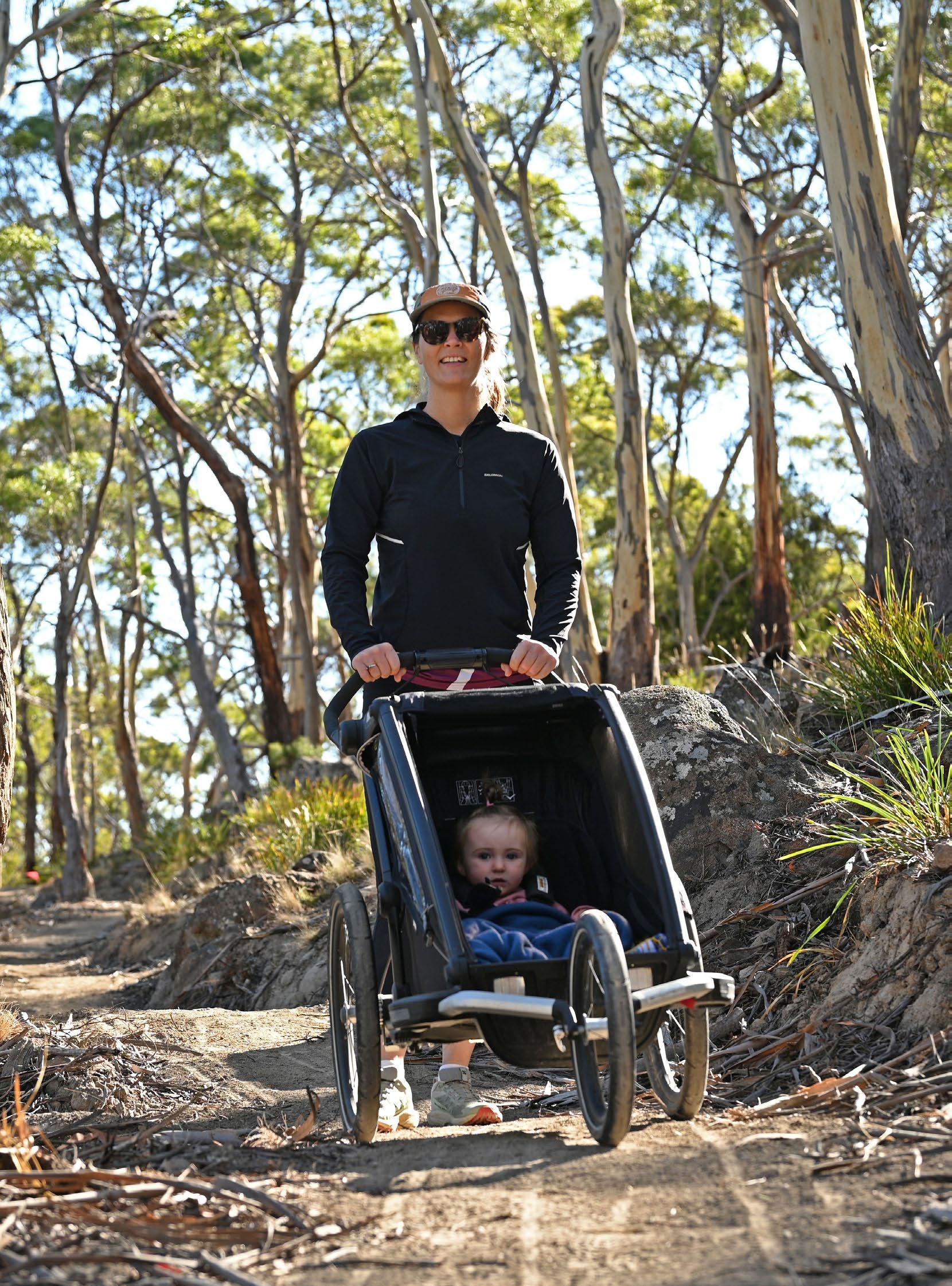
Open spaces owned or managed by the City of Hobart
Open space owned or managed by the City of Hobart can be seen on the series of maps on the following pages.

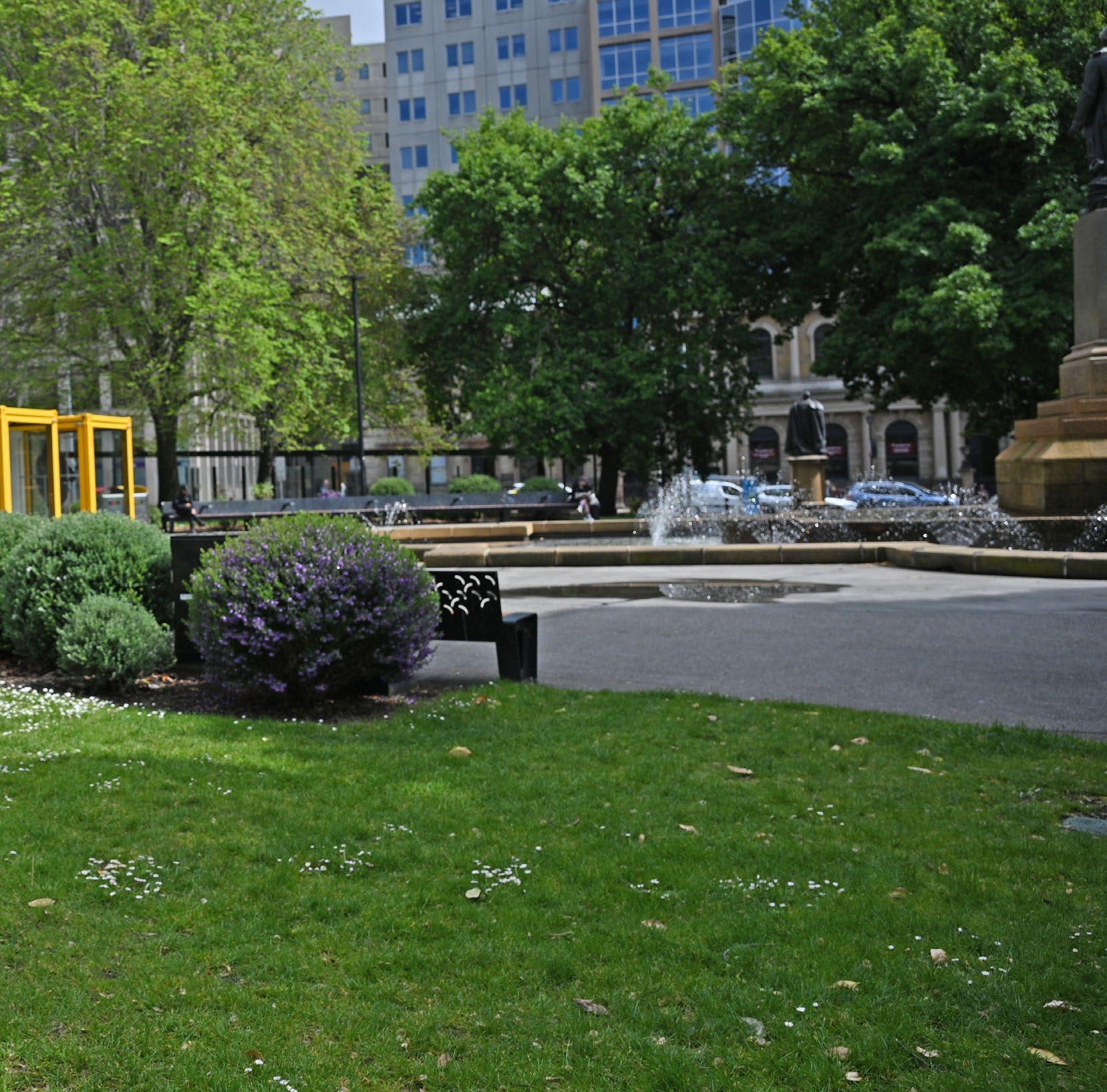
BATTERY POINT SANDY BAY | MT NELSON
West Hobart
Mount Nelson
Sandy Bay
Dynnyrne Hobart
Tolmans Hill
HOBART | NTH HOBART QUEENS DOMAIN | GLEBE | NEW TOWN
Wellington Park
Lenah Valley
Fern Tree
PinnacleRoad
Huon
RIDGEWAY | FERN TREE
West Hobart
South Hobart
Wellington Park
Dynnyrne
Ridgeway
Fern Tree
Kingston
Tolmans Hill
SOUTH HOBART | DYNNYRNE TOLMANS HILL
West Hobart
Mount Stuart
South Hobart
Sandy Bay North Hobart
Wellington Park
Dynnyrne
Hobart
Lenah Valley Glebe
Tolmans Hill
Ridgeway
Mount Nelson
WEST HOBART | MT STUART LENAH VALLEY
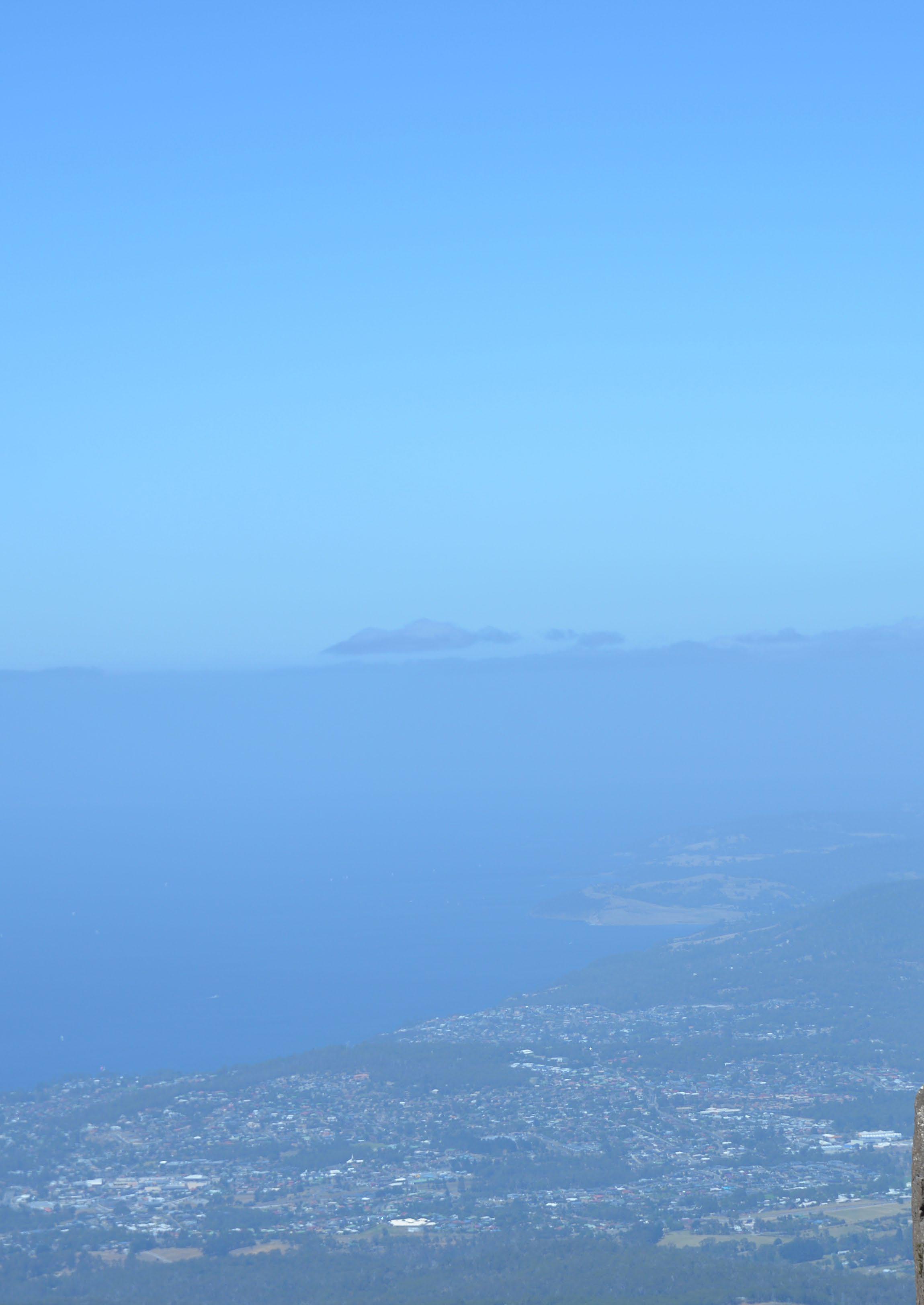
What are the functions of Hobart’s open spaces?
Hobart open spaces are found across the city, from Timtumili Minanya/ Derwent River to Kunanyi/Mt Wellington. These open spaces vary in size and character and serve many different purposes or functions.
The Bicentennial Park bushland area is predominantly for conservation of flora or fauna, the famous Caldew (Train) Park in West Hobart is a playground, and the Hobart Rivulet Park’s primary function is a popular walking and wheeling track.
Many of our larger open spaces will have more than one function. A good example of this is Cornelian Bay with its general recreation area on the oval, a playground, areas of conservation, and places for rest or relaxation.
Landscaped areas
Landscaped areas provide amenity or have aesthetic values, and are often on roadsides, nature strips, in a roundabout or similar areas. They might be grassed, contain trees or other plantings, and provide benefits for biodiversity or sustainable urban drainage.
Some areas contain seating.
Examples include Waterloo Crescent at Battery Point and the ABC roundabout embankment.
Rest or relaxation
Open spaces predominantly for passive recreation such as sitting, socialising and eating or drinking.
They are usually smaller open spaces such as pocket parks or smaller local parks, heritage parks and beaches.
Conservation
Areas for which the primary purpose is the conservation and enhancement of biodiversity values. These open spaces include bushland reserves and open space with significant trees.
Heritage
Areas for which the primary purpose is the conservation and enhancement of heritage or cultural values. These open spaces include formal landscaped parks and heritage elements within parks.
Cemetery and remembrance
These include closed cemeteries that are managed by the City of Hobart and areas in open spaces in memory of people or animals.
General recreation
Areas that are suitable for all types of recreation activity including unstructured sports activities for people and their dogs.
Playground
Areas that contain play equipment for children and young adults. Sometimes fenced and usually located within a larger area of open space.
Linear tracks and trails
These open spaces are often on rivulets or form connection or linkages between different parts of the city and open spaces.
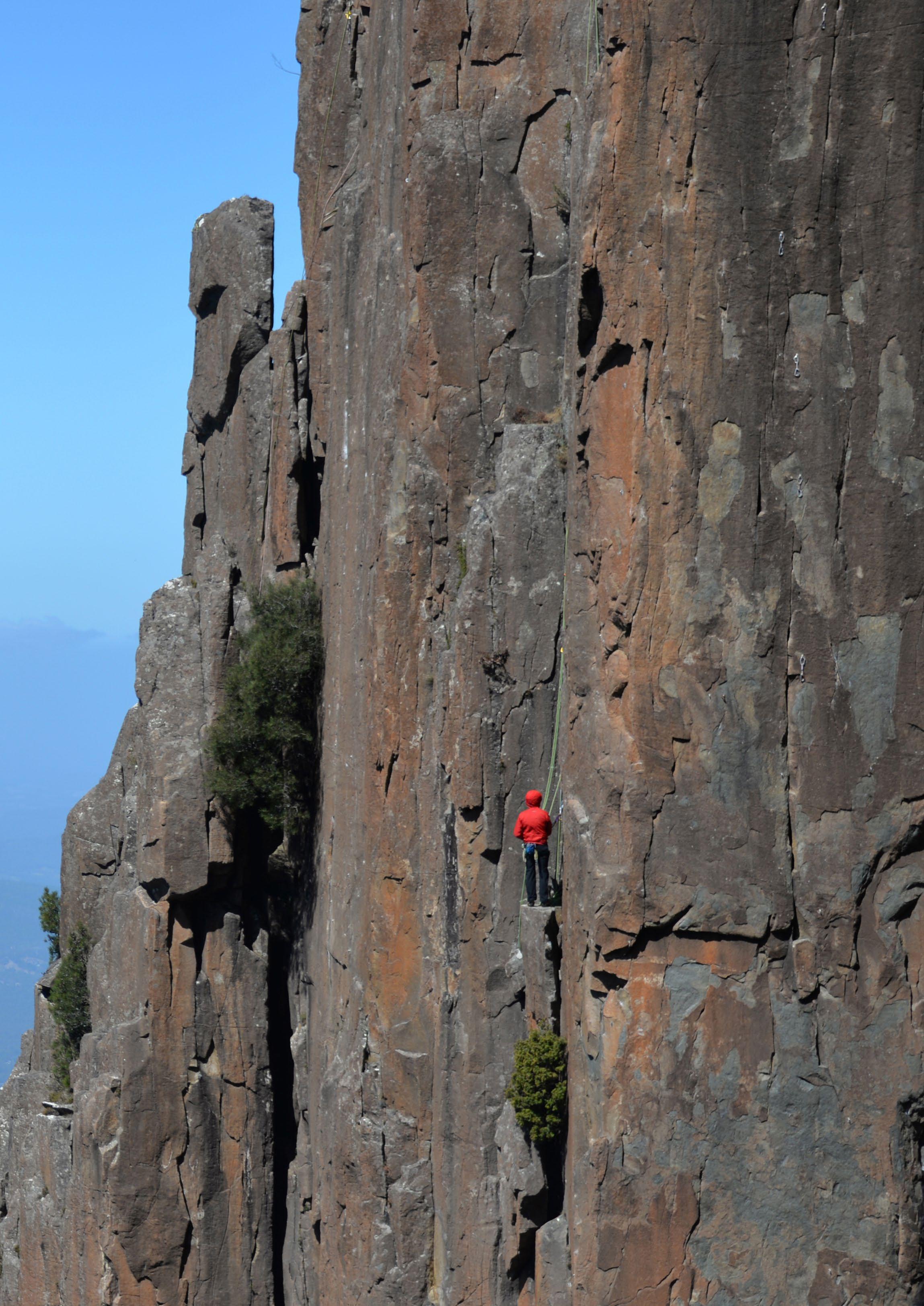
Hierarchy of open spaces
To inform this strategy and future work we have developed a hierarchy for Hobart’s open spaces. The hierarchy recognises that open spaces operate at different levels and generally service different-sized catchments, while recognising that Hobart is an established city with a huge range of existing open spaces.
Hobart is unique as it contains a significant amount of bushland that is interwoven with the urban environment in many suburbs. Whilst the principal role of this bushland is for protection of biodiversity parts of these areas provide a space for recreation for some residents.
The hierarchy details different levels of open space, a desired proximity standard, a theoretical description of open spaces at that level of the hierarchy for the type of open space. The position within the hierarchy of the open space will influence the amenities on offer and the anticipated amount of resources needed for that open space.
For example, local open spaces, generally service the local community/suburb and the residents within 5-10 minutes’ walk (400m) of the open space.
District, regional and state significant open spaces provide different types of recreational experiences with larger areas of open space that will generally service a greater population, including those from neighbouring local government areas and
interstate. Accordingly, open spaces that are subject to higher levels of use will need a higher level of service.
As a future priority, we want all residents in urban areas to be within 400m walking distance (desired service standard) of at least a local open space and for all residents to be within 800m of a district level or higher open space.
Some areas of open space may perform more than one function and accordingly operate at more than one level, for example a District level open space may provide a dual recreation park that is sometimes used for structured sport but also meets the local recreation needs of residents in the area.
This hierarchy is intended to be informative and the basis for a comprehensive plan that will specify our plan for delivering open space in the future.
The proposed hierarchy for open space in Hobart is detailed in Table 5, on the opposite page.
Hierarchy Description Desired
Landscaped Areas
Local Open Space
District Open Space
Nature Strips and other areas of open spaces normally located along roadsides.
Open space typically provided at suburb level.
Is readily available for the recreational needs of the residents in the immediate area and neighbourhood.
Generally for shorter visits.
Able to accommodate neighbourhood gatherings.
Open Space intended to serve more than one suburb including residents and visitors from both the local neighbourhood and surrounding suburbs, including some users from areas outside Hobart such as Glenorchy or Clarence.
A destination where visits are for a specific purpose and stays are longer as these spaces are subject to higher levels of amenity/embellishment.
Able to accommodate over 100 people and used by individuals or groups/sports teams drawn from Hobart and adjoining Local Government Areas.
400m distance of dwellings (for casual/frequent visits).
ABC Embankment Burnett Street.
Friends Park Kalang Avenue
Swan Street Park
800m distance of dwellings
Cornelian Bay Oval and Foreshore Reserve
Fitzroy Gardens
John Turnbull Oval and Park
Soundy Park
Parliament Street Oval
Regional Open Space
State Significant Open Space
Large areas of open space and/or subject to high usage from a large number of people.
Open Space intended for use by all Hobart’s residents, large numbers of people from Southern Tasmania and visitors to the region.
Open space that has high value for recreation due to location, size, or facilities on offer.
Suitable for events for a large number of people, including events that attract people to the region.
Attracts residents from across Tasmania and interstate and overseas visitors.
Open space that has high value for recreation due to cultural reasons, location, size, or facilities on offer.
Spaces consistent with a capital city.
Table 5 Open Space Hierarchy
For the Greater Hobart region
Cascade Gardens
Long Beach
Princes Park Waterworks Reserve
Spaces of state and national significance
Cenotaph
Queens Domain
Wellington Park
Parks near people – filling in the gaps
Creating a city that makes it easy for people, no matter where they live, to access public open space has both social and health benefits.
Areas of Hobart within 400m of a park
The map on the next page shows Hobart areas that are within 400m walking or wheeling distance of an open space designated as a park.
For this map we have included all parks within the hierarchy (see full list of parks in Appendix 1) but excluded bushland areas. A distance of 400m is a five to ten minute walk for most people. Also on the map are areas of Hobart with buildings – houses, commercial buildings and associated infrastructure – that aren’t within 400m of a park.
The map reveals gaps in the open space network where residents do not live within 400m of a park. These gaps are in the suburbs of Hobart, Dynnyrne, Lenah Valley, Mount Stuart, New Town, North Hobart, Sandy Bay and West Hobart.
While access to public open space is important for everyone due to the social and health benefits it provides, in Hobart’s more urban areas, access to open space may be considered more important, as dwellings are less likely to have large gardens and residents rely more on public green space for recreation.
Accordingly, we will prioritise these areas when planning to fill the gaps in the open space network.
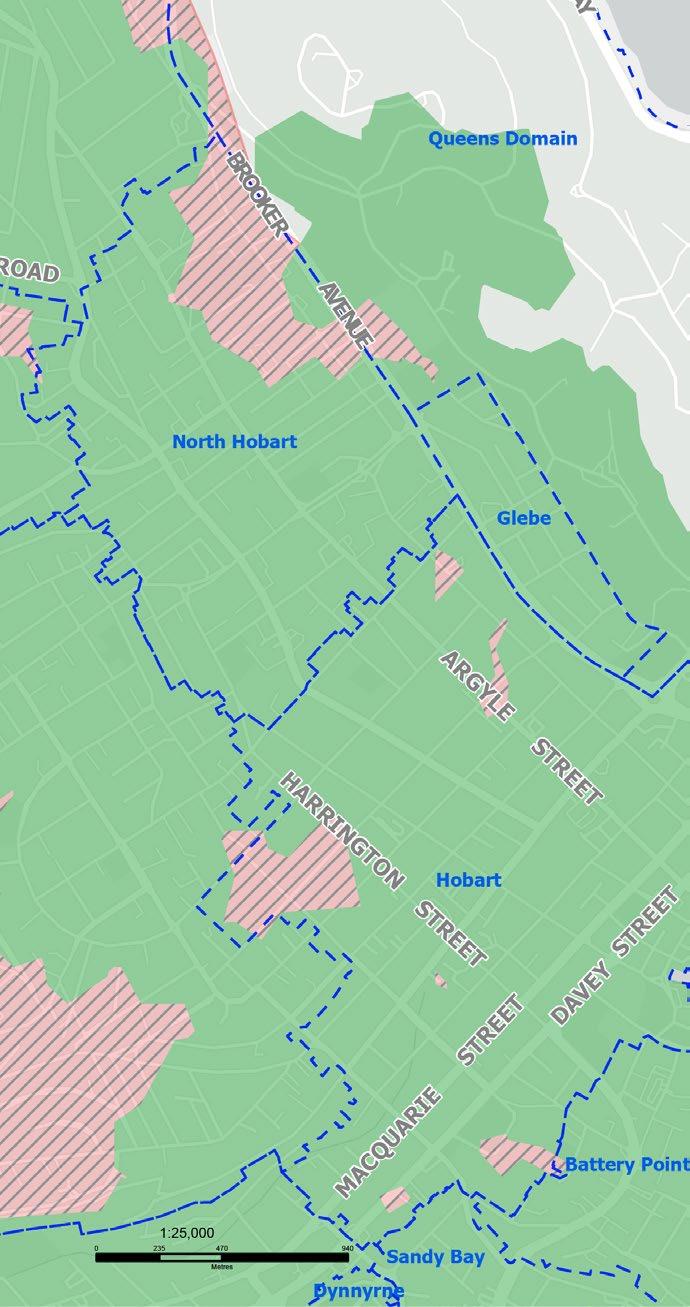

The implementation plan that supports this strategy includes an action to develop a plan that ensures in the future everyone has access to open space in accordance with the desired proximity standards.
AREAS WITHIN 400 METRES OF A PARK

Areas of Hobart within 800m of a District, Regional or State Significant Park
The map on the next page shows Hobart areas within 800m walking or wheeling distance of a district, regional or state significant open space designated as a park (see list of these parks in Appendix 1).
A distance of 800m is approximately a 10 to 15 minute walk for most people but might take longer in some areas due to Hobart’s topography.
Also on the map are areas of Hobart with buildings – houses, commercial buildings and associated infrastructure – that aren’t within 800m of one of these larger, district, regional or state significant parks.
The map shows gaps across the city where residents do not live not within 800m of a district, regional or state significant park. The main gaps are in Lenah Valley, New Town and Sandy Bay.
It might not be possible to provide access to large parks in all peri-urban areas of the city,
however, residents of these areas often have access to bushland that may meet some of their recreation needs.
It is important that everyone has access to public open space due to the social and health benefits it provides. Access to larger areas of open space is important because large parks provide for a more diverse range of recreational opportunities than can be experienced in a smaller local park, some of which, such as pocket parks, might be less than 300m² in size.
In suburban areas, these large parks provide places for active recreation and games, while those close to the city might be a place to walk the dog, visit a skate park or attend an event. Future planning will look at how we can improve access to larger parks and ensure that the facilities can cope with increasing demands.
The implementation plan supporting this strategy includes an action to develop a plan that ensures that in the future everyone has access to open space in accordance with the desired proximity standards.
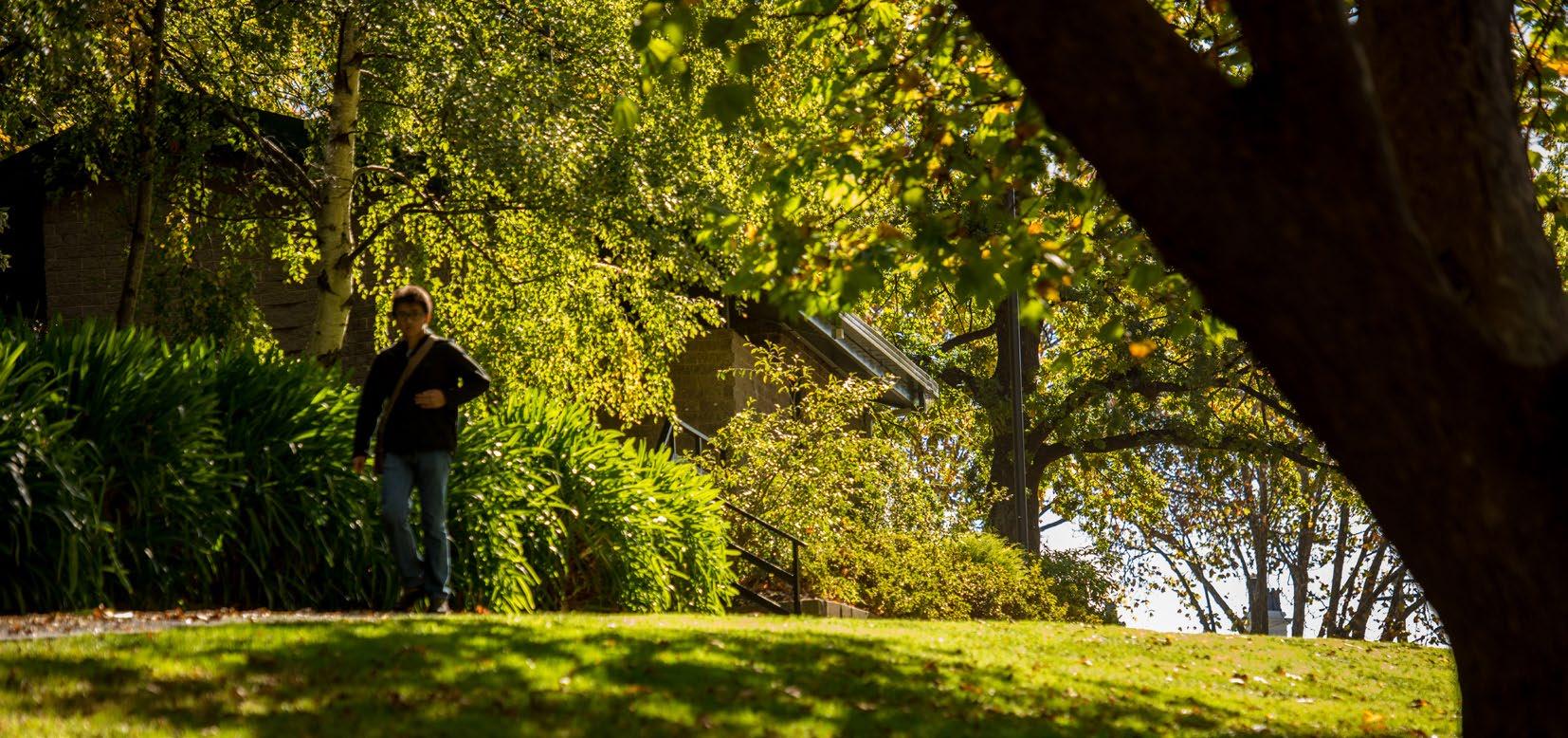
AREAS WITHIN 800 METRES OF A DISTRICT, REGIONAL OR STATE SIGNIFICANT PARK

Areas of Hobart
within 400m of a playground or play equipment
The maps on the following pages show playgrounds and play equipment in Hobart with a 400m ‘as the crow flies’ buffer, or catchment area, around each of them. Also on the maps, is the areas of Hobart, where there are buildings (houses, commercial buildings and associated infrastructure) outside of the 400m catchment area.
For this analysis, a playground is three or more pieces of play apparatus, a combination play unit, or a skate park. Play equipment is one or two pieces of play equipment, or sometimes a basketball half court.
The map shows that there are areas in Hobart where there are concentrations of playgrounds and play equipment, some of which might be used infrequently given
nearby alternative options. There are areas where there aren’t any playgrounds or play equipment, for example, a significant area of Sandy Bay. We currently have two skate parks in the city, one of which is on Department of Education land in North Hobart and the other nearby in John Doggett Park.
The implementation plan that supports this strategy includes an action to develop a playground action plan. In this plan, a more detailed analysis of demographic data will consider where we should have specific playgrounds or play equipment, whilst having regard to the required funding to deliver the play infrastructure. We know that older children and teenagers love skateboarding and scooting so, on completion of this strategy, we propose to undertake an assessment of facilities and equipment to identify if and where we upgrade skate parks and provide facilities such as pump tracks.

AREAS WITHIN 400 METRES OF A PLAYGROUND OR PLAY EQUIPMENT

AREAS WITHIN 400 METRES OF A PLAYGROUND OR PLAY EQUIPMENT
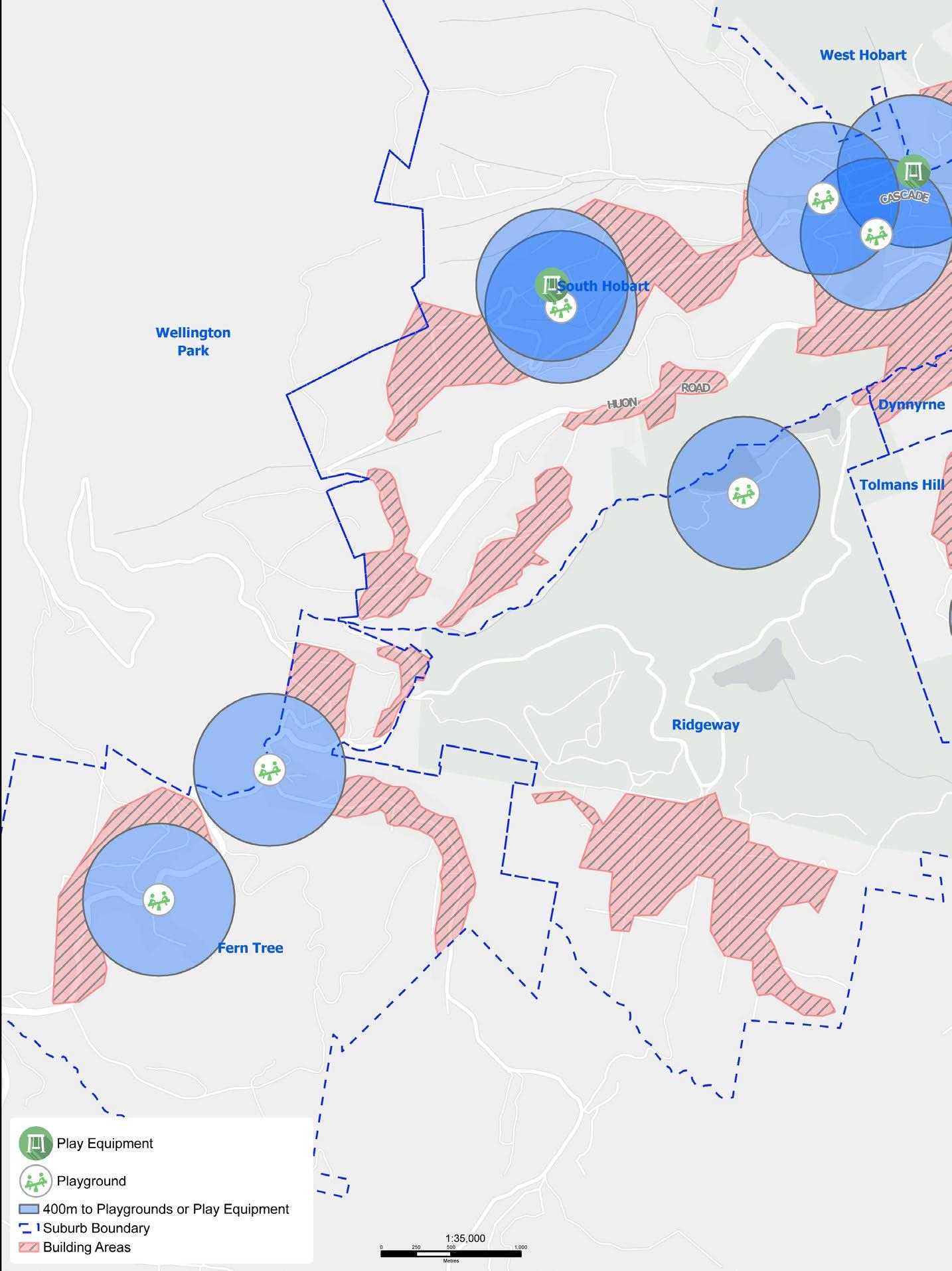
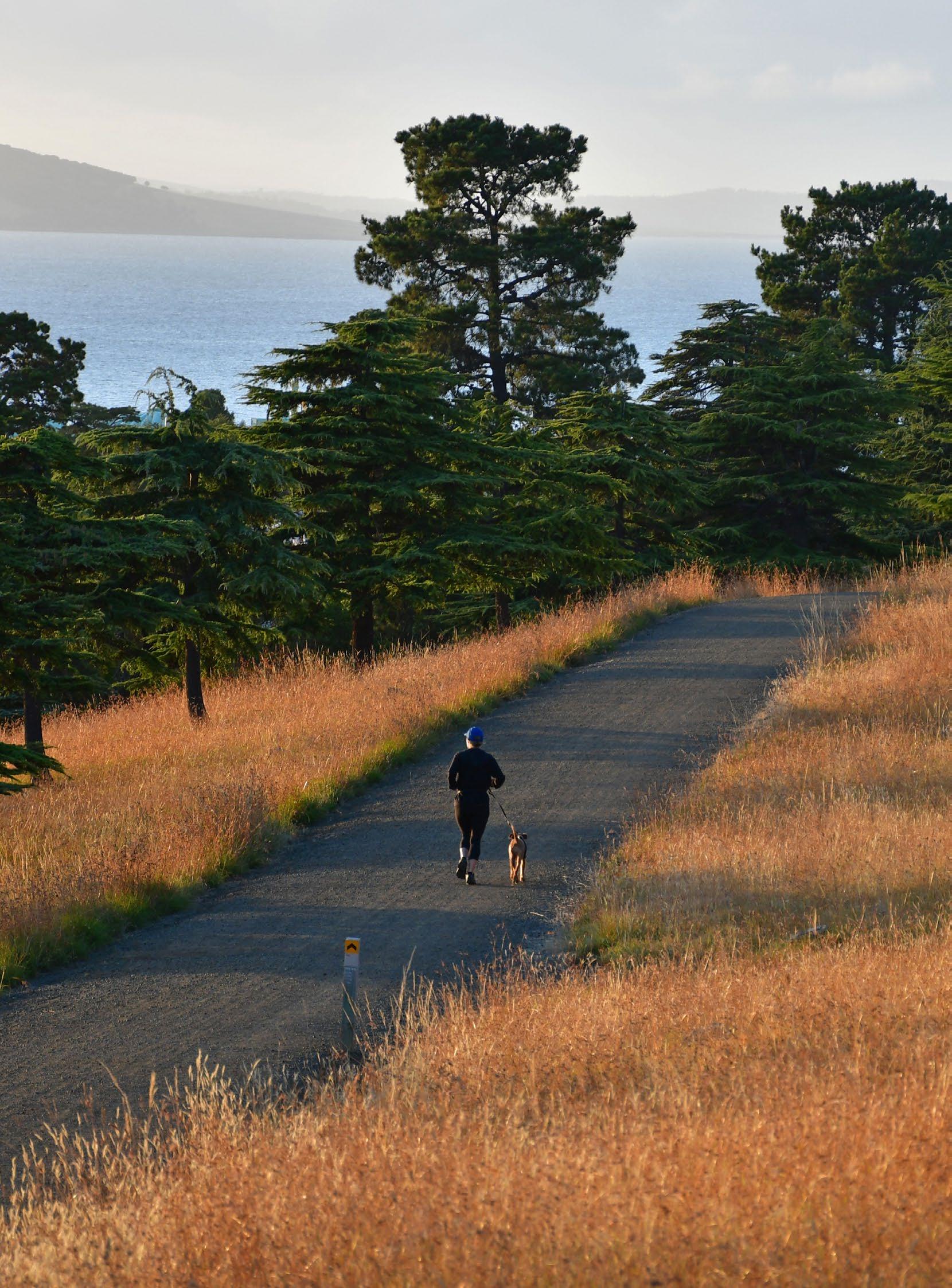
Trends and opportunities
This open space strategy addresses major trends and opportunities that influence how Hobart’s open spaces are used now and into the future. These trends present both opportunities and implications for how our open spaces are managed and provided.
Population growth and increasing visitor numbers
In the 12 years from 2023 to 2035, Tasmania’s population is expected to increase by almost 36 000 people7. Most of this growth will take place in the Greater Hobart region. The plan for Central Hobart actively encourages the provision of additional dwellings and a variety of housing types and tenures to meet the projected population demand.
Increasing the density of development and subsequent number of residents and workers in Central Hobart is likely to lead to additional demand on already limited public open space. Generally, higher density development provides less private open space. For example, more apartments built in inner urban areas results in fewer back yards for recreation. Securing additional land in inner urban areas for public open space is expensive.
Hobart is a popular arrival point for interstate and international visitors. In 2024, the city received approximately 1.6 million domestic overnight visitors and nearly 2.5 million people visited Hobart for the day8. The Tasmanian Government would like to see 1.6 million interstate visitors and 400 000 international visitors travelling to the state every year by 2030.
A City of Hobart open spaces survey conducted in 2024 revealed that many non-Hobart residents use our open spaces, with more than a third of survey responses coming from people who reside outside of the Hobart local government area.
Hobart’s open spaces play a vital role in servicing considerable demand from residents, people visiting from neighbouring council areas or elsewhere in Tasmania, for work or leisure, as well as interstate and overseas visitors. The most popular natural destination for visitors to Tasmania is Kunanyi/Mt Wellington, which receives approximately 500 000 interstate and overseas visitors annually.
Gaps in open space provision
Mapping of our open space network reveals some significant gaps in open space provision across some suburbs – meaning some residents don’t have easy walking access to public open space. This mapping is shown in the parks near people section of this strategy. To remove these gaps, new land will need to be acquired, or existing City of Hobart owned or managed land creatively repurposed. The gaps also extend to the provision of facilities (such as playgrounds, toilets, skate parks and pump tracks) across the municipality. This mapping also shows that some areas are potentially overserviced from a public open space perspective.
7. Tasmanian Government 2024 Population Projections for Tasmania (medium series)
8. statista.com/number of domestic visitors to Hobart by type of trip
Case Study

Temporary open space – Yard 16, Macquarie Point
This site is open to the public seven days a week. Situated at Macquarie Point, the temporary community space includes an edible garden, two half basketball courts, outdoor seating and a welcoming environment for visitors.
The City of Hobart can seek contributions towards the provision of public open space from subdivision development but not strata development, which is likely to be the majority of future development in Hobart. Without changes by the Tasmanian Government, the cost of acquiring new land for public open space for future residents, workers and visitors will continue to be predominantly funded by existing residents and businesses.
Understanding the current use of open space and estimating future usage demand, including potential conflicts, is needed to help inform priorities and planning for appropriate investment in new and existing open space, services and facilities. One solution to gaps in provision might be to explore the temporary use of vacant land as open space, particularly in central Hobart, where there are a number of vacant blocks of land (see case study).
Climate change
Climate change is already impacting biodiversity and human health. This has led to an increased risk of extreme weather events such as flooding, drought, urban heat and conditions that increase the likelihood and severity of bushfire. These impacts are unavoidable and the costs of repair and renewal of assets after extreme weather events are well documented.
While we cannot stop the impacts of climate change on our open spaces, we can reduce and mitigate the impacts through careful land and resource management. This means carrying out regular and ongoing bushfire mitigation measures such as fuel reduction burns, planting more trees in urban areas and developing new ways to manage heavy rainfall events.
This strategy and the City of Hobart’s 2040 Climate Ready Hobart Strategy include actions that help protect our open spaces from the impacts of climate change.
Recognising Tasmanian Aboriginal heritage and culture
Understanding our cultural history and supporting creative and cultural initiatives that invite people to engage with the Tasmanian Aboriginal community, their history and culture in our open spaces needs to be delivered in partnership with Tasmanian Aboriginal organisations and groups.
There are a number of actions we can take to improve connection to country in our open spaces and these actions are detailed in the implementation plan that supports the delivery of this strategy.
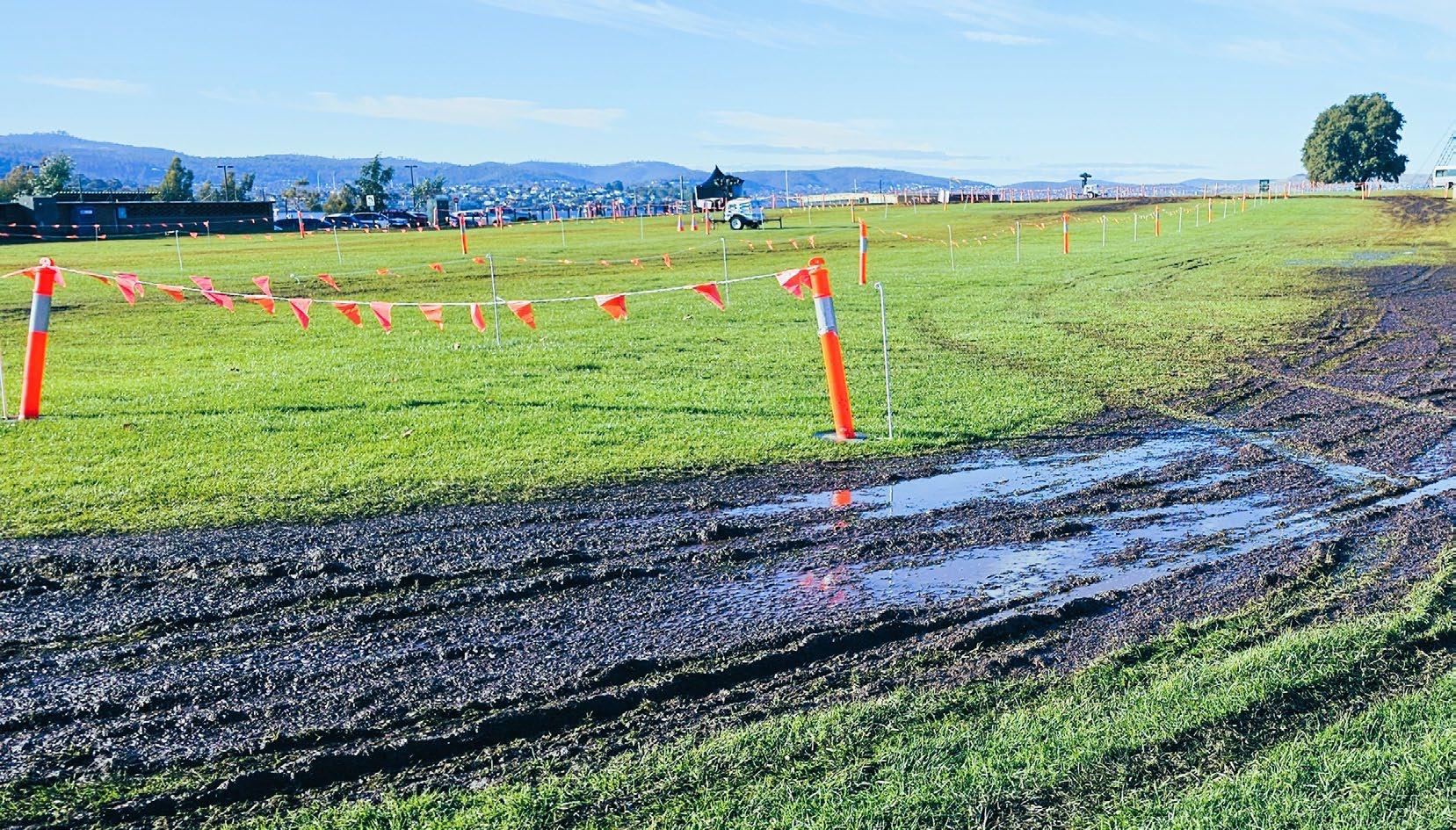
Ageing population and health outcomes
Fifty-four per cent of Tasmanians are considered insufficiently active9. The most recent National Health Survey found Tasmania has the highest proportion of adults in Australia that are overweight or obese at over 70 per cent10 of the adult population. We have high levels of people with disability and more than four in five (84.9 per cent) of people living in Tasmania had at least one long-term health condition in 202211. Tasmania also has an ageing population and the likelihood of acquiring a disability increases with age.
Open spaces provide opportunities for people of all ages and abilities to access areas with natural surroundings and take part in activities that can help improve physical and mental health and wellbeing, at no cost

Case Study
or low cost. This is particularly important to ensure equity of access to recreation. We can do more to encourage people to get more active in our open spaces by improving access and making them great places for everyday recreational pursuits.
Changes in the way people use recreation and leisure time
People are changing the way they use their leisure time – with an increase in time spent on individual recreational pursuits, such as recreational walking, cycling, running and bushwalking, which will continue the increasing demand for use of our open spaces.
The increased usage is accompanied by expectations about additional and improved facilities in open spaces. The need to provide diverse and compliant facilities requires
Parking and events at Hobart Regatta Grounds
This land is grassed open space that is available for public use. At times it is utilised for activities that include the Royal Hobart Show and touring events for example, the circus and Spiegeltent. The land is also used to provide free of charge parking during the Christmas/New Year period and Dark Mofo. Whilst a fee is paid for use of the land for private events, car parking generates no income and frequently results in the requirement for costly repairs. Cost
benefit analysis is not commonly undertaken for each activity that occurs at the Regatta Grounds but matters for consideration include, the cost of repairing the ground after use as car parking or an event, the impact on neighbouring land uses and whether there is a better or alternate location for the activity. We propose to undertake further investigation into the use of this space and whether we need a dedicated event space in the city.

investment in infrastructure, maintenance and upkeep as well as program development and long-term planning.
For example, bushwalking is more popular in Tasmania than any other state or territory of Australia and mountain biking continues to grow in popularity. The City of Hobart maintains more than 250km of bushland tracks and trails. Increasing demand from locals and visitors requires ongoing investment in maintenance of tracks and trails, upgrades as well as supporting infrastructure like public toilets.
Increasing demand from the commercial sector
Hobart is a popular event city, and easy access to our open spaces makes them popular with event organisers. As the number of events increases so too will our need to plan for the additional demand and resultant impacts on our open spaces. We also need to ensure the revenue collected for the use of our open spaces covers the costs of maintenance following an event. There is a need to explore opportunities and secure sufficient funds to improve the quality and
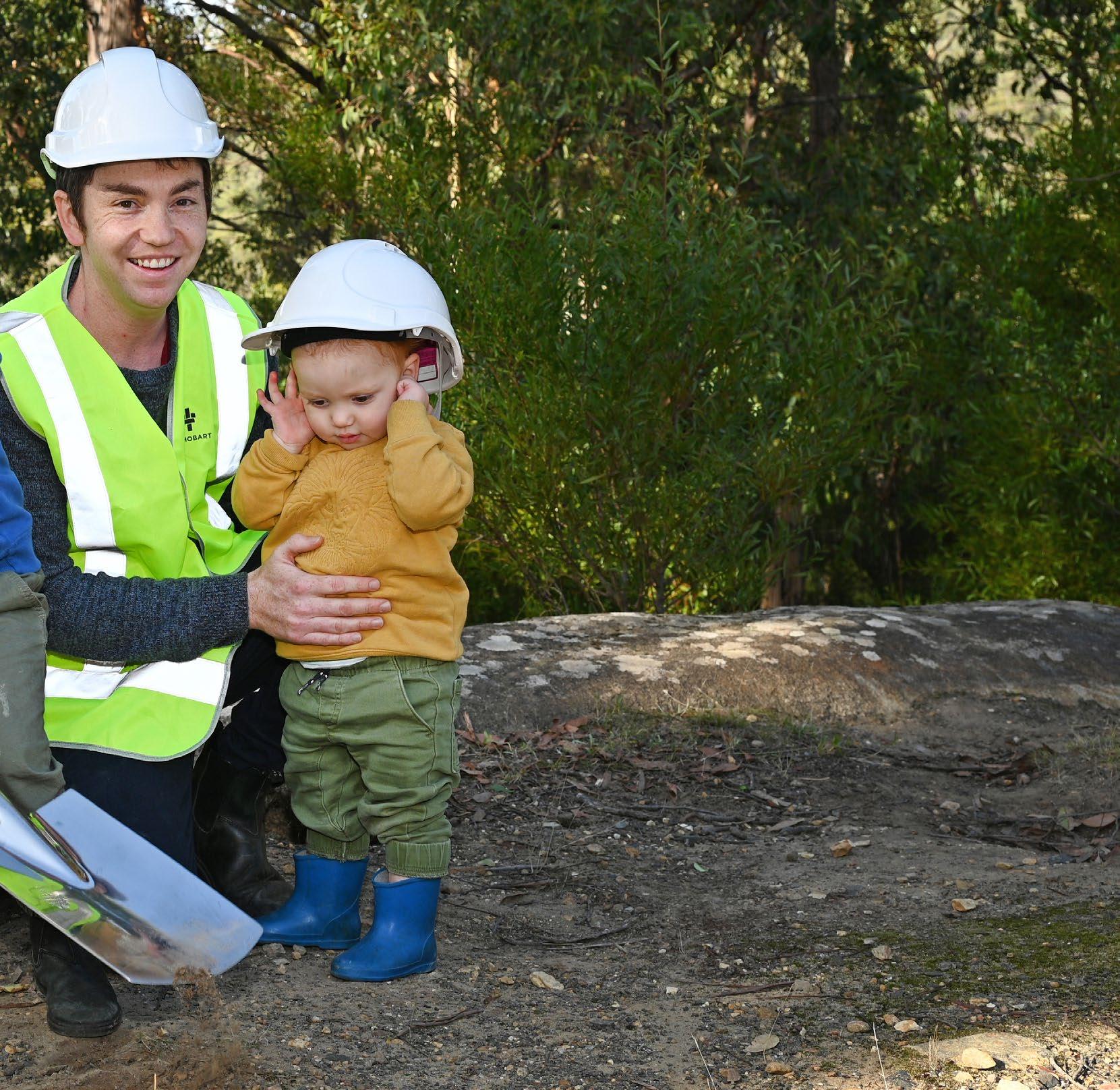
quantity of open spaces and sustain them for future generations to enjoy. This could be done, for example, by adopting new and innovative ways to use, manage and maintain open space.
Rising construction and material costs
The City of Hobart is not immune to the rise in construction and materials costs. This impacts our ability to deliver open space upgrades and maintain open spaces to a high standard. Efficient allocation of existing
resources is required along with the need to identify opportunities that increase funding for open spaces. Additionally, improved data collection is required to support management of open spaces in a way that maximises the use of resources.
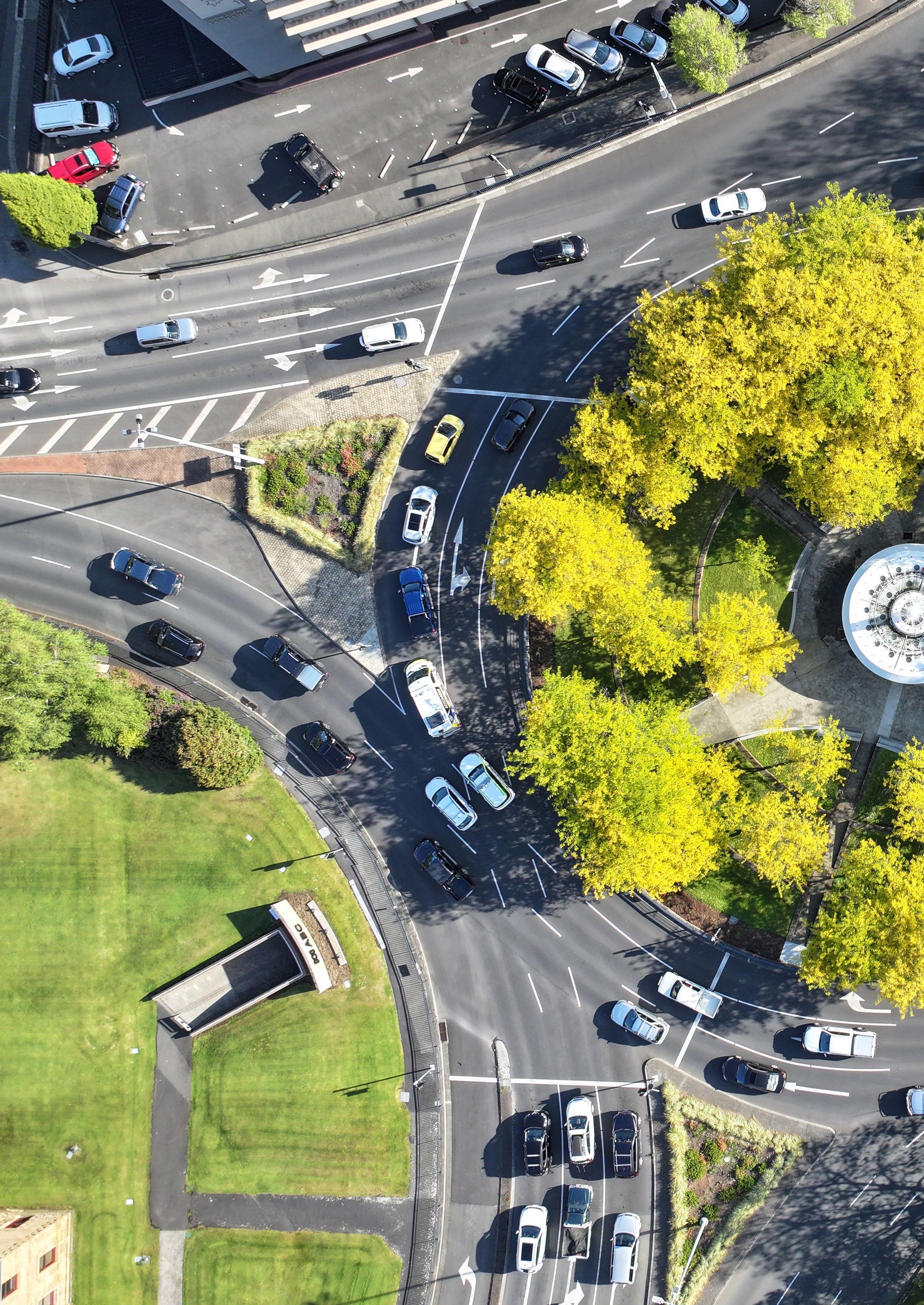

Future focus
Creating open spaces with an eye to the future
Hobart’s open spaces contribute greatly to the quality of life enjoyed by our residents, the Greater Hobart population and the many people who visit our city from interstate and across the world.
We need to plan for the challenges of population growth, changing demographics and lifestyles, increasing demand, climate change and its associated impacts on our natural world, our precious native plants and animals, and seek out opportunities to ensure our open spaces are future ready.
This strategy focuses on the City of Hobart’s green spaces that cater for a wide range of passive and active recreation and leisure activities. These open spaces are important for the health and wellbeing of our community and the environment, and include:
• bushlands and reserves
• recreation and urban parks
• playgrounds
• skate parks
• outdoor gyms
• beaches and foreshores
• tracks and trails
• public gardens
• other landscaped areas.
Principles for open space in Hobart
We have developed a set of principles to use in planning for open spaces in Hobart. The principles are interrelated and set out the significant values that are central to our planning for open space.
Each principle has a set of goals that will be delivered through actions.
The five principles
Our open spaces are balanced for people and nature, they enhance the health and wellbeing of current and future communities and help mitigate the effects of climate change.
1.
Accessible and inclusive
Our open spaces are for the enjoyment of everyone in our city and everyone who visits Hobart. Increasing the amount of accessible and inclusive open spaces for people of all abilities, ages and cultures to use them for recreation and leisure, help build social cohesion and reduce levels of social isolation.
Goals
1.1 Open spaces that can be accessed and enjoyed by everyone in the community
We want our open spaces to be as accessible as possible so that everyone can enjoy them.
In 2022 more than 170 000 Tasmanians were living with a disability – almost 30 per cent of the population12. Over 38 000 Tasmanians –almost 7 per cent of the population13 – need assistance with core activities.
Ensuring our open spaces are accessible and can accommodate people with different needs will become increasingly important as people live longer and the likelihood of disability increases with age.
Older people will continue to be active in our open spaces and, importantly, continue to participate in leisure, recreation and volunteering activities. Due to Hobart’s topography and the natural formation of our bushland reserves, not all of our open spaces can be fully accessible to everyone.
We aim to meet different needs in different places. By incorporating universal design principles into new and upgraded open spaces we can ensure as many people as possible can access a range of open spaces.
1.2 Welcoming for people of all ages
Open spaces are social spaces that provide opportunities for activity, relaxation and stimulation for everyone. Our open spaces are welcoming and help combat social isolation and loneliness by being inviting for everyone at all life stages.
We want them to be friendly places for people, where everyone, regardless of their
12. Disability, Ageing and Carers, Australia: Summary of Findings, 2022 13. www.abs.gov.au/statistics/health/disability/disability-and-carers-census/2021
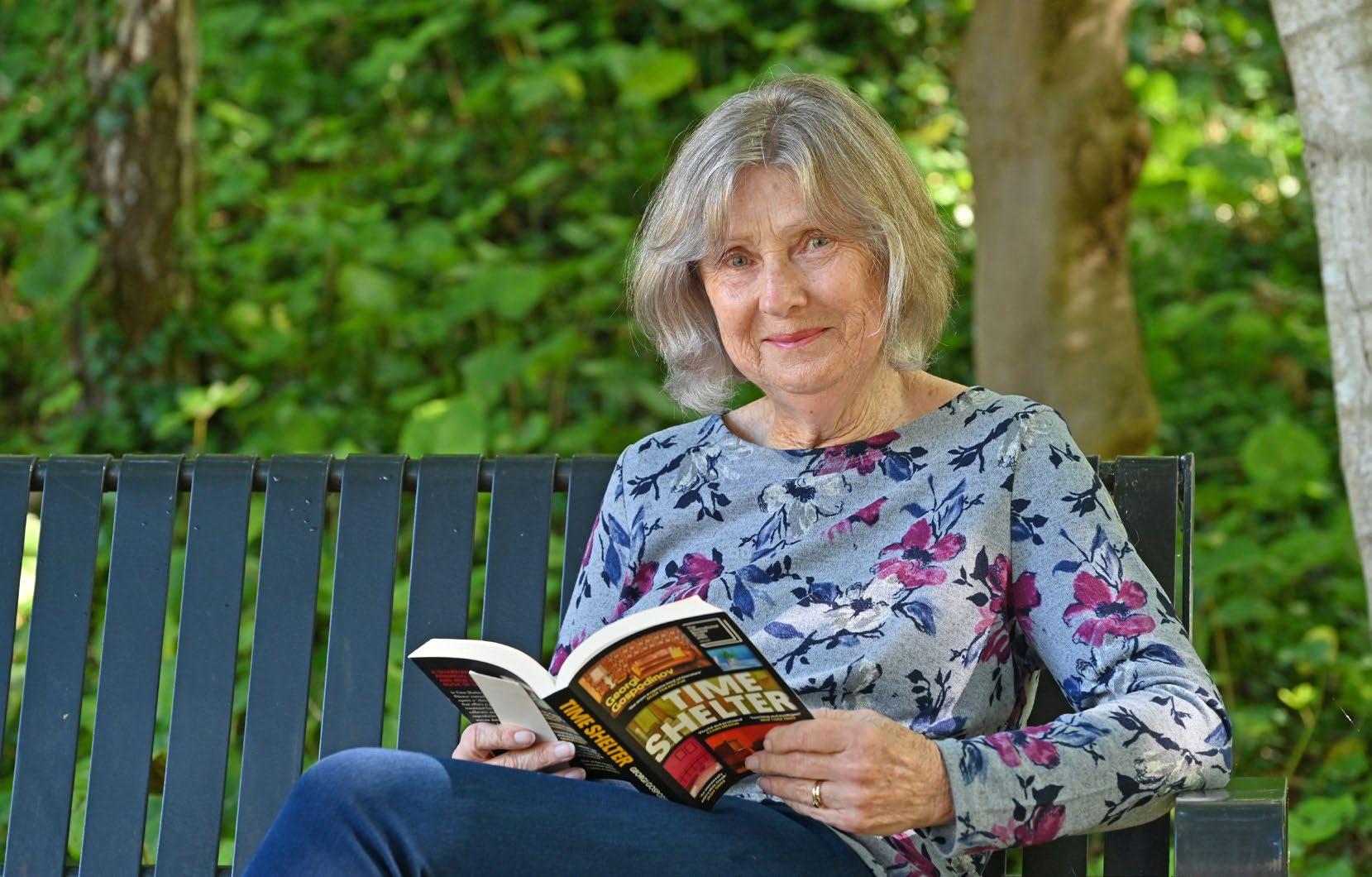
age, wants to spend time and access areas for recreation that are free of charge, inclusive and allow for healthy exercise or relaxation in green space.
1.3 Safe places
Everyone wants to feel safe in their community. Well-designed open spaces should feel safe for everyone.
We want to design and manage our open spaces to mitigate the likelihood and
WHAT WE ARE DOING NOW
Upgrading playgrounds to include more accessible play that enables children to play together.
fear of crime. Crime prevention through environmental design suggests the three key elements to safety are:
• encouraging activity
• providing opportunities for passive surveillance, and
• providing safe choices.
SIGNATURE ACTION
Develop a dementia friendly seniors garden in one of our parks.
2. Nature positive
Nature’s beauty inspires and enriches our lives, and Hobart is uniquely entwined with its natural environment. From the windswept alpine heaths on Kunanyi/Mt Wellington to the winding paths of our rivulet corridors and the serene banks of the River Derwent, our natural surroundings define the character and identity of our city.
Many people are drawn to Hobart by its seamless integration with our bushland forests, woodlands and grasslands, and the opportunity to seek solace in nature. Others are attracted by our formal gardens, and the diverse tapestry of the Queens Domain, where recreation parks and playgrounds blend seamlessly with winding bushland trails.
Goals
2.1 Nature is secure and flourishing
We are deeply committed to protecting, restoring and improving biodiversity, not just for its own sake, but to ensure our survival and that of future generations. The health of our precious bushland reserves is under threat from climate change, invasive weeds, pest animals, wildfire and habitat fragmentation. These reserves are sanctuaries for extraordinary species found nowhere else on Earth, such as the Knocklofty leek-orchid, Mt Wellington eyebright, Silky snail and Ammonite snail.
Our mission is to safeguard these natural treasures by managing the reserves based on their inherent biodiversity values and the threats they face. By doing so, we strive to secure a thriving future for Hobart’s bushland reserves and the unique plants and animals they shelter.
2.2 Resilient open spaces mitigate climate change impacts
Climate change disrupts ecosystems, causing stress to people, plants, animals and natural elements, leading to significant environmental and health challenges. By creating climate resilient open spaces, we can provide essential refuges that help mitigate these impacts.
Open spaces help protect us from some impacts of climate change by acting as natural buffers against extreme weather, mitigating flooding and by absorbing carbon dioxide, a major greenhouse gas. Our bushland reserves and suburban parks help absorb heavy rainfall on the city’s edges.
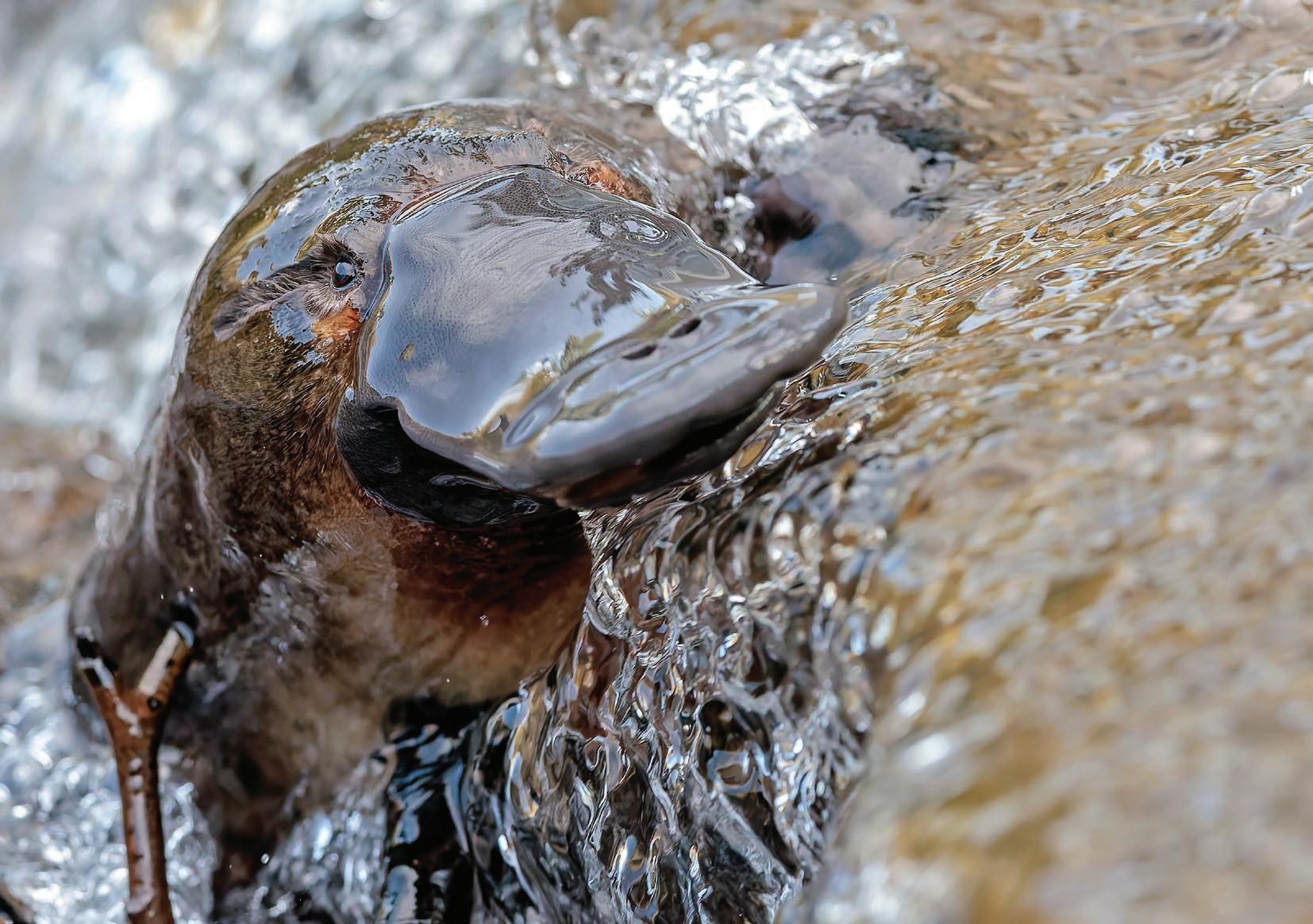
2.3 Nature threads through our city
Our urban parks and bushland reserves are spread throughout our City and provide opportunities for recreation and connection to nature while also providing habitat for wildlife.
Urban open spaces play a particularly important role in reducing urban heat, and irrigated and shaded spaces are particularly important.
Our open spaces are interconnected by a network of green corridors that facilitate movement of people and wildlife across our city. They offer opportunities for active travel, exploration, recreation and nature appreciation, enhancing the city’s liveability.
By allowing species to move across the landscape these linkages help increase resilience to disease and the changing climate.
We prioritise preserving and enhancing these connections between the built and natural environments.
WHAT WE ARE DOING NOW
Increasing the number of trees planted in our open spaces and in the corridors that link them.
SIGNATURE ACTION
Develop a plan for a flagship urban ecological restoration project.
3. Cultural
Hobart is a cultural city and open spaces provide opportunity for people to get together and participate in social and cultural activities.
Culture creates conditions for growth and our open spaces provide somewhere for our community to grow by learning and sharing cultural activities and knowledge. Our open spaces are welcoming locations for ideas to generate, somewhere to celebrate and places to experience art and performance.
Goals
3.1 People can engage with Tasmanian Aboriginal culture in open spaces
Prior to colonisation, there were nine known Aboriginal nations with close to 50 family groups living across Tasmania. They have cared for the land upon which Hobart was built for more than 40 000 years. This place was home to the muwinina people of the South-East Nation.
Tasmanian Aboriginal people, also known as Palawa people, represent the oldest continuous culture in the world and their connection to Country remains unbroken. Appreciation and understanding of this Tasmanian Aboriginal history and cultural connection and relationship to Country is an important part of the story of our open spaces to be acknowledged through interpretation and events.
3.2 Contemporary cultural heritage
In more recent history, there are stories that can be told through our open spaces. Many of our open spaces are either included on the Tasmanian Heritage Register, listed as a heritage place or form part of a heritage precinct. Heritage open spaces include Arthur Circus and St Davids Park.
Many of our residents and visitors have their own special connection to an open space and these are reflected in the names of parks and reserves and memorial benches and trees. These individual connections will continue to promote a sense of place for so many people.
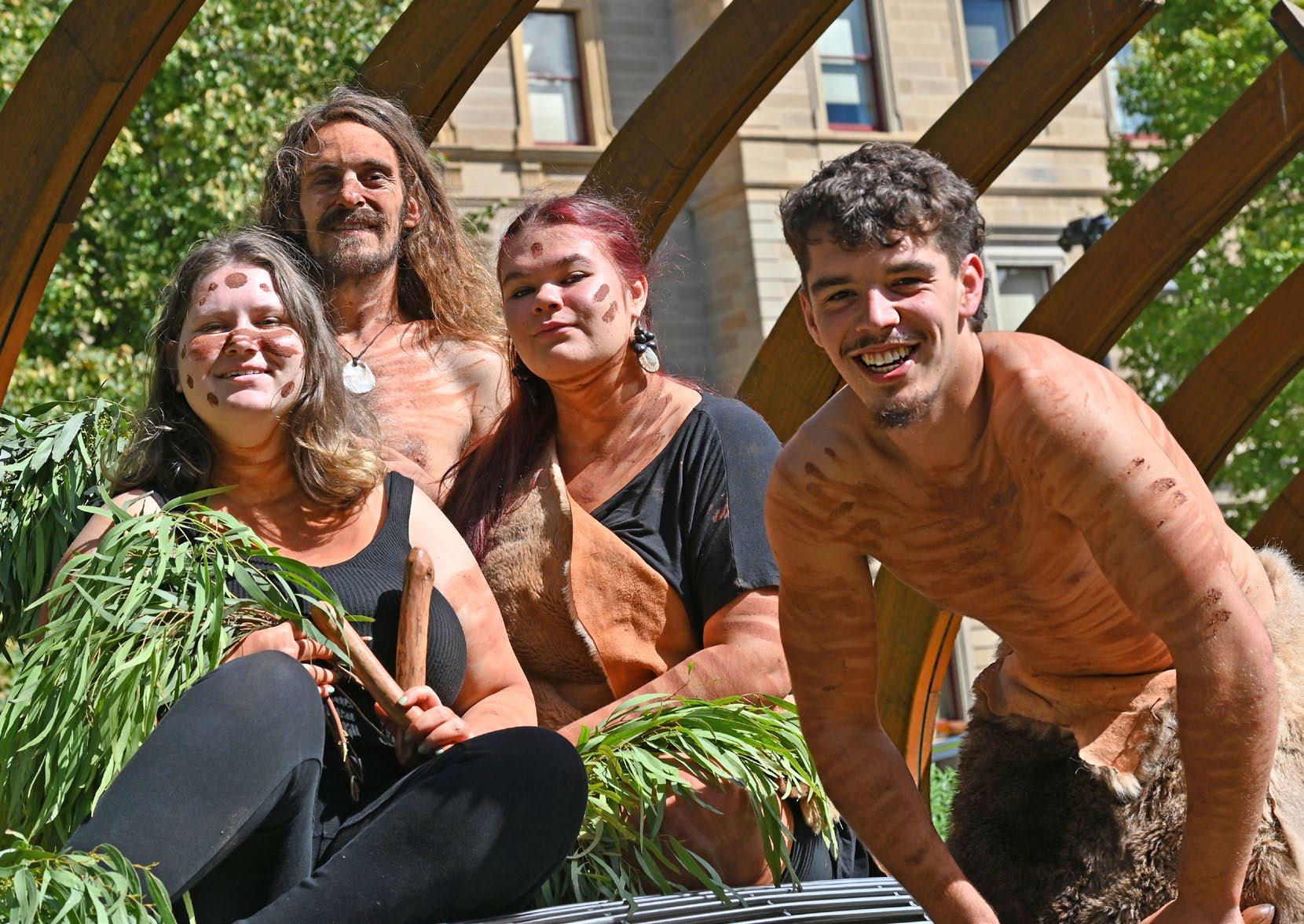
3.3 A place for gatherings and social events
We know people love to use our open spaces as places to meet with friends and family (including their dogs). Being in a natural area with trees, grass and plants creates a pleasant and relaxing environment for socialising. Open spaces are great places for holding organised events or gatherings, particularly those that are easily accessible to many people using a range of transport options.
WHAT WE ARE DOING NOW
Provide Tasmanian Aboriginal cultural activities within the Bush Adventures program to build community awareness and understanding of Aboriginal people and culture.
A variety of open spaces accommodate different numbers of people and different types of events, from food festivals to multicultural events and celebrations. Popular open spaces include Franklin Square, Salamanca Lawns, the Queens Domain, Waterworks Reserve and Kunanyi/Mt Wellington. We will continue to make open space available for large and small events while balancing the needs of everyone in the community.
SIGNATURE ACTION
Increase the presence of Tasmanian Aboriginal words/language in track and path signage as well as parks and bushland reserves to ensure signage recognises Aboriginal connection to country.
4. Health and wellbeing
Open space provides significant mental and physical health benefits by providing a place to undertake activity or exercise, a space for contemplation and relaxation in natural surrounds, and opportunities for community and social interaction.
Goals
4.1 Our open spaces benefit human health and support healthy and physically active lifestyles
Spending time in natural settings can dramatically improve physical and mental health by reducing the incidence and severity of many health conditions such as diabetes, heart disease, obesity, anxiety, depression and dementia, in people of all ages and from all backgrounds.
We will continue to promote and encourage use of our bushland open spaces for activities such as running, walking or mountain biking, and our recreation parks for social interaction and community events.
Creating and improving paths for walking will help improve access to a free, simple and effective form of exercise with many physical and mental health benefits.
We want to provide more green open space for recreation and leisure in urban settings as natural surfaces generally have less noise and air pollution, and lower air temperatures, than open spaces with hard surfaces. This will help to manage the urban heat island effect.
A place to sit and catch up with friends or to simply ‘watch the world go by’ is incredibility important for social interaction and mental health.
4.2 Spaces for connection and contemplation
Open space is not always about activity and at times we need a quiet place to sit, practice mindfulness and let our senses be connected to nature.
By offering accessible natural and recreation spaces for reflection, we can help increase connection to nature and deepen appreciation for the environment. In urban

areas, our city parks provide lunchtime refuges from work and places to relax on a busy day. In these urban areas, there should be parks with quieter places screened from traffic noise and air pollution.
4.3 Facilitating active travel
Open spaces in natural settings provide ideal routes for active travel options such as cycling and walking, increasing the wellbeing of commuters and reducing the number of vehicles on the road, which will support cleaner air.
By working with partners, we can examine how to improve connectivity between our open spaces and urban areas, providing safe, attractive and seamless paths of travel that enable people to experience nature as part of their daily activities.
We will aim to increase tree canopy cover on connecting paths from surrounding streetscapes and improve safety for pedestrians and cyclists along these connecting routes.
WHAT WE ARE DOING NOW SIGNATURE ACTION
Support community organisations to use City of Hobart buildings in open spaces.
Develop and upgrade existing rivulet tracks (Hobart, New Town, Sandy Bay) to improve connectivity, accessibility and ensure they provide an enhanced experience for people.
5. Quality and quantity
As the number of visitors to Hobart’s open space increases and the climate changes, our open spaces will be placed under additional pressure.
A significant increase in the number of people using existing open space can be detrimental to the quality of the space and its ability to perform its function successfully.
As the climate changes there is an increasing need to build climate resilience into our open spaces.
The continued provision of open space of sufficient quantity and quality to meet the needs of residents and visitors may require a change to the current approach.
Goals
5.1 Meet the needs of residents and visitors now and into the future
Hobart has a vast range of open spaces, with many of regional significance, that are subject to high use and which we maintain to a high standard. As we plan for population growth and changing lifestyles, we need to address gaps in our open space network to ensure we have equitable distribution of open space across the community to meet the needs of residents and visitors.
We will explore how we can provide new open space to meet anticipated population growth in urban areas where opportunity is limited due to land values and requirements to accommodate housing and economic growth.
5.2 Our open spaces are carefully planned
Our open spaces will be appropriately managed, designed and maintained to ensure they are robust and adaptable and remain fit for purpose and capable of being used activities and events where appropriate.
Having defined management or master plans for our district, regional and state significant open spaces will be critical to ensure these spaces can provide maximum benefit to the community. Asset management and maintenance are key considerations for any infrastructure, ensuring future resources can be appropriately apportioned.

5.3 New and
upgraded open spaces utilise sustainable
design principles
Our open spaces will be creatively designed to ensure they use resources efficiently. Water conservation is an important priority. Methods to achieve this might include drought resistant planting, and, in suitable locations, detaining and harvesting rainwater on site to help with watering vegetation and stormwater management.
We will consider using renewable energy to power lighting and our water fountains
(bubblers). We will prioritise the procurement of materials with zero to low emissions and where possible use recycled and sustainable materials to promote resource efficiency and reduce waste.
Increasing the number of trees will provide additional shade from summer sun and increase the availability of surfaces that will cool or reflect heat, rather than absorb it. Our open spaces need to benefit the wellbeing of the community and provide an accessible space for everyone while being easy to reach via a range of transport options.
WHAT WE ARE DOING NOW SIGNATURE ACTION
New urban open spaces are designed to be robust and adaptable over time so they remain fit for purpose and can be used for a variety of activities.
Investigate options for new open space in the Central Hobart Plan and North Hobart Neighbourhood Plan areas.


Making it happen
Implementation plan
The implementation actions outlined in this strategy represent an ambitious plan for Hobart’s open spaces over the next decade.
How will we deliver the actions?
These implementation actions will be delivered through a variety of approaches, with an expectation that the significant majority of the actions will be delivered by the City of Hobart.
• Actions will be delivered as part of a program of work, as a project, or with a partner organisation.
• Medium and long term actions for signature projects might require investment from other levels of government, private entities, and philanthropic organisations.
The adopted strategy will be used to assess and prioritise funding needs for open space for all City of Hobart owned and managed open space.
It is important to note that this strategy excludes a lot of the business-as-usual work done to maintain Hobart’s open spaces on a day-to-day basis.
Timeframe for implementation of actions
The actions will be delivered within the short term, medium term, long term or will be ongoing across the life of the strategy. As the strategy will be periodically reviewed, some of the medium and long term actions will be considered as part of a review and the priority of these actions may be assessed and the actions reprioritised.
The timeframes are as follows:
• Short term: within 2 years.
• Medium term: 2-5 years.
• Long term: 5-10 years.
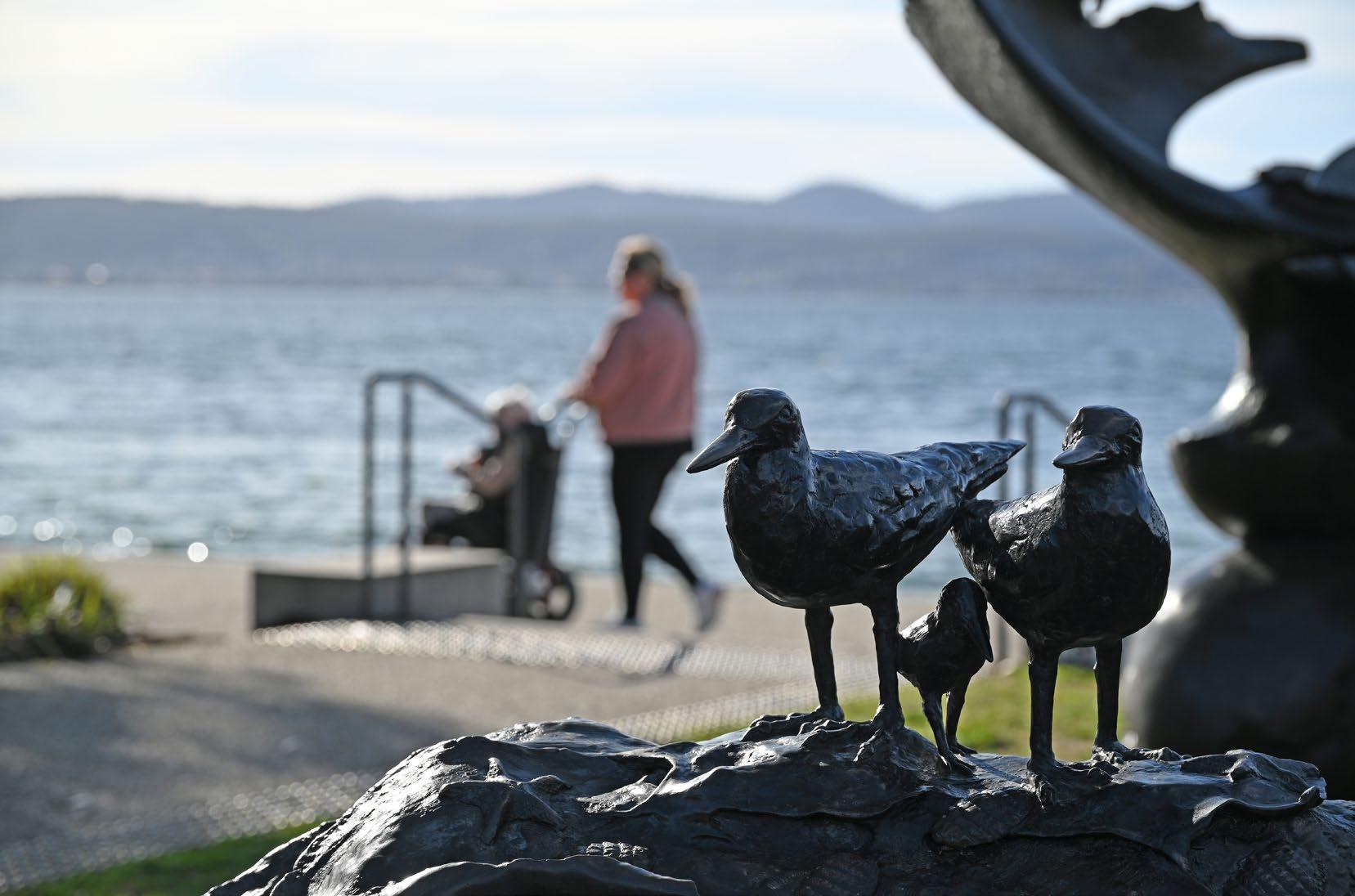
Principle 1: Accessible and Inclusive
1.1 We have open spaces that can be accessed and enjoyed by everyone in the community
1.1.1 Develop a program of work to upgrade and improve the accessibility of parks and open spaces. Work will be informed by an access audit and might include pathways, kerb ramps, car parking spaces, accessible park furniture and amenities.
1.1.2 Work with developers to ensure open space provided to the City of Hobart is accessible to everyone in the community. For example, it meets the requirements of the Disability Discrimination Act 1992
1.1.3 Undertake a review of toilet facilities in bushland reserves and parks to include the availability and compliance of accessible toilet facilities, to help prioritise toilet upgrades.
Project Short
Principle 1: Accessible and Inclusive
1.2 Welcoming for people of all ages
1.2.1 When installing new outdoor gyms incorporate exercise equipment suitable for older people.
1.2.2 Develop a dementia friendly garden in one of our parks.
1.2.3 Develop a Playground Action Plan that includes a review of existing playgrounds and identifies suburbs where opportunities should be explored for new playgrounds, including nature based playgrounds.
1.2.4 Undertake assessment of facilities and equipment for older children and teenagers –such as skate parks, basketball half courts and pump tracks.
1.3 Safe places
1.3.1 Improve lighting in open space active travel corridors to enhance safety and make them more attractive to all users, while being sensitive to wildlife.
1.3.2 Undertake a one year trial of the lighting of two dual recreation open spaces during the evening from April to October. Monitor and report on the financial and non-financial costs/benefits of the trial to determine whether to make it an ongoing arrangement.
Delivery Method Timeframe
Project Medium
Project Medium
Project Short
Project Short
Program Medium
Project Medium
Principle 2: Nature positive
2.1 Nature is secure and flourishing.
2.1.1 Explore ways to increase community connections to Hobart’s nature and biodiversity.
2.1.2 Enhance public education on activities that impact our natural values (e.g. vegetation removal, dogs off-lead in sensitive areas).
2.1.3 Promote and drive good quality ‘Citizen Science’ initiatives and projects, that contribute to centralised databases, including pollinator observations, invasive plants and bird monitoring.
2.1.4 Create a biodiversity-centred ‘welcome information pack’ for new residents in key, high value conservation areas.
2.1.5 Develop a plan for a flagship urban ecological restoration project.
2.2 Resilient open spaces help mitigate climate change impacts
2.2.1 Develop a Greening Infrastructure Asset Management Plan (including trees) that will capture and record information of the vegetation in our parks and reserves.
2.2.2 Develop plant species lists and guidelines for climate appropriate plantings on private and City of Hobart land.
2.3 Nature threads through our city
2.3.1 Identify key ecological corridors through our urban areas that enhance connectivity between native bushland, supporting wildlife movement and habitat diversity.
2.3.2 Identify and develop partnerships with key private landholders to seek opportunities to expand access to open space.
Delivery Method Timeframe
Project Short
Program Ongoing
Project Medium
Project Short
Project Medium
Delivery Method Timeframe
Project Short
Project Medium
Delivery Method Timeframe
Project Long
Partner Long
Principle 3: Cultural
3.1 People can engage with Tasmanian Aboriginal culture in open spaces Delivery Method Timeframe
3.1.1 Establish a collaborative partnership with Pakana Rangers to support shared learning and participation in on-ground land management activities across Hobart’s natural areas.
3.1.3 Increase the presence of Tasmanian Aboriginal words/languages in track and path signage in parks & bushland reserves to ensure that signage recognises Aboriginal connection to country.
Partner Long
Program Ongoing
3.2 Contemporary cultural heritage Delivery Method Timeframe
3.2.1 Develop a program of works for Princes Park. Project Medium
3.2.2 Promote and recognise the importance of our heritage parks during Hobart open house week.
3.2.3 Collaborate with key partners to deliver projects to better service visitor needs for Kunanyi/ Mount Wellington – including implementing projects from the One Mountain Many Stories prospectus.
3.2.4 Review the use of the Cenotaph and Regatta grounds to determine the suitability of use for parking and events.
Program Ongoing
Partner Long
Project Medium
3.3 A place for gatherings and social events Delivery Method Timeframe
3.3.1 Create an online annual program of events in public spaces. Partner Ongoing
3.3.2 Investigate use of the former Beaumaris Zoo site as a permanent event space.
Project Long
Principle 4: Health and Wellbeing
4.1 Our open spaces benefit human health and support healthy and physically active lifestyles
4.1.1
4.1.2
Establish a Parkcare program that allows members of the community to become part of a group that helps maintain a park in their area.
To help combat loneliness and encourage community interaction, install ‘Happy to Chat’ benches (a simple sign that reads ‘Sit here if you don’t mind someone stopping to say hello’) in selected parks.
4.1.3 Create a trail of fruit trees in open spaces.
Delivery Method Timeframe
Project Long
Project Short
Project Short
4.2 Spaces provide places for quiet contemplation Delivery Method Timeframe
4.2.1 Increase the amount of shaded seating areas in parks.
4.2.2 Encourage developers to create ‘pop-up’ parks and public green spaces on vacant land.
Project Ongoing
Partner Medium
4.3 Facilitating active travel Delivery Method Timeframe
4.3.1
4.3.2
Review pedestrian accessibility, amenity and safety around key entrances of popular open spaces to improve connections between open space and the public realm.
Work with partners to provide information on etiquette for cycling or using a personal mobility device on paths within open space.
4.3.3 Develop and upgrade existing rivulet tracks (Hobart, New Town, Sandy Bay) to improve connectivity, accessibility, and ensure they provide an enhanced experience for users.
4.3.4 Develop a recreational track and trail action plan to improve Hobarts recreational track and trail network (to include links between open spaces such as parks and bushland).
Partner Medium
Project Ongoing
Program Ongoing
Project Short
Principle 5: Quality and Quantity
5.1 Meet the needs of residents and visitors now and into the future
5.1.1 Develop a long-term plan that details how we can provide future open space to ensure everyone has access to open space in accordance with the desired proximity standards in the hierarchy. The plan will include priorities for spending public open space contributions.
5.1.2 Investigate options for the provision of new open space in the Central Hobart Plan and North Hobart Neighbourhood Plan areas.
5.1.3 Seek opportunities to partner with schools or other organisations for community use of shared open space.
Method Timeframe
5.1.4 Advocate for the Tasmanian Government to seek legislative change that facilitates an infrastructure charging regime to cover the cost of new open spaces to meet the needs of future residents. Partner Short
5.2 Our open spaces are carefully planned
5.2.1 Develop Management Plans for all District, Regional or State Significant level parks to appropriately plan for future use, starting with Salamanca Lawns and Cornelian Bay.
5.2.2 Develop a plan that identifies visitor facility needs across the five major bushland parks/ reserves (Kunanyi/Mt Wellington, Queens Domain, Ridgeway/Waterworks Reserve, Bicentennial Park, Knocklofty).
Method Timeframe
Program Medium
Principle 5: Quality and Quantity
5.1.3 Undertake biennial analysis of the use of Hobart’s open spaces and use the findings to inform future budget priorities.
5.3 New and upgraded open spaces utilise sustainable design principles
5.3.1 Identify suitable open space locations for managing overland flow.
5.3.2 Investigate opportunities to connect parks to recycled water.
5.3.3 Investigate alternatives to the use of synthetic grass in City of Hobart owned parks.
Program Medium
Delivery Method Timeframe
Project Medium
Project Medium
Project Medium
Appendix 1
The following tables provide a snapshot of recreation open spaces that are included in the Open Space Strategy and shown on the maps detailed in the strategy.
It should be noted that not all areas of bushland shown on the mapping are reflected in the following tables, as the focus is on open spaces used for recreation.
The open spaces in the tables are either owned or managed by the City of Hobart, some of which are managed in partnership with community organisations.
The open spaces are grouped in accordance with their position in the hierarchy with the
primary function of the open space listed next to the name of the open space. It should be noted that in some instances, specific areas of open spaces have more than one primary function.
Local Open Space
Suburb Open space name
Battery Point A.J. White Park
Arthur Circus Reserve
Buckley’s Rest
Gladstone St Reserve
Henslowe Park
Napoleon St Playground
Purdon & Featherstone Reserve
Ross Kennedy Patent Slip Park
St George’s Park
Fern Tree Fern Tree Picnic Area and Playground
Westringa Playground
Function
Rest or Relaxation
Other significant features
Heritage Play equipment
Heritage
Rest or Relaxation
Playground
Rest or Relaxation/ Playground
Rest or Relaxation Play Equipment
Rest or Relaxation
Rest or Relaxation
Rest or Relaxation/ Playground Playground
Rest or Relaxation/ Playground Playground
Hobart Garden of Memories Cemetery and Remembrance
Lord Mayors Garden
Mathers Lane
Molle & Goulburn Play Area
Railway Roundabout Gardens
St Andrews Park
St Davids Cathedral Gardens
Lenah Valley Bakers Milk Corner
Doyle Ave Playground
Edge Ave Playground
Girrabong Reserve
Rest or Relaxation
Rest or Relaxation
Rest or Relaxation/ Playground
Rest or Relaxation
Heritage/Cemetery and Remembrance
Rest or Relaxation
Rest or Relaxation
Rest or Relaxation/ Playground
General Recreation/ Playground
Rest or Relaxation
Local Open Space
Glenrose Park
Haldane Reserve
Kalang Avenue Park
Riseley Crt Playground
Wallace Ave Playground
Mount Stuart Mt Stuart Hall Play Area
Rosina Court Playground
New Town Fairfield Play Area
Forster St Reserve
Garrington Park
Harbroe Ave Park
John Kennedy Playground
Seymour St Playground
Stoke St Reserve
Swanston St Playground
Valentine St Reserve
Wendover Place Reserve
Wilmslow Ave Reserve
Rest or Relaxation/ Playground
Conservation Bushland
Rest or Relaxation/ Playground
Rest or Relaxation/ Playground
Rest or Relaxation/ Playground
Playground
Rest or Relaxation/ Playground
Playground
Linear Tracks and Trails
General Recreation/ Playground Walking track
General Recreation
Rest or Relaxation/ Playground
Rest or Relaxation/ Playground
Rest or Relaxation
Rest or Relaxation/ Playground
Rest or Relaxation
Rest or Relaxation
Linear Tracks and Trails
Local Open Space
North Hobart Swan St Park
Wilson Street
Queens Domain Aberdeen Street Playground
Sandy Bay Derwentwater Reserve/Lords Beach
Manning Avenue Reserve
Osborne Park
Pearces Park No.1
Rest or Relaxation/ Playground
Landscaped Area
Rest or Relaxation/ Playground
Rest or Relaxation
Rest or Relaxation
Rest or Relaxation
Rest or Relaxation
Pearces Park No.2 Conservation Bushland
Red Chapel Avenue Reserve
South Hobart Degraves Street Reserve
Marlyn Rd Play Area
Rest or Relaxation
Rest or Relaxation
Rest or Relaxation Basketball Hoop
Saunders Crescent Reserve Playground
South Hobart Play Area Playground Tennis Court Basketball/Netball Hoop
West Hobart Friends Park
Rest or Relaxation/ Playground Playground
Leonard Wall Valley Street Reserve Conservation Community Orchard
Peace Park
Una Street/Lower Jordanhill Road
Rest or Relaxation
Rest or Relaxation
District Open Space
Suburb Open space name
Dynnyrne Fitzroy Gardens
Lenah Valley Acanthe Park
Mount Nelson Mount Nelson Oval
Mount Stuart Mount Stuart Park
New Town Clare Street Oval
Cornelian Bay Oval Bayside Grounds and Foreshore Reserve
John Turnbull Oval and Dog Park
Function
Other significant features
Heritage/Rest or Relaxation/ Playground Toilet
Conservation/ Heritage Bushland
General Recreation/ Playground Toilet
General Recreation/ Playground Toilet
General Recreation Toilet
General Recreation/ Playground Toilet
General Recreation/ Playground Toilet, Dog Agility Park, Outdoor Gym Equipment
New Town Bay Reserve Rest or Relaxation
New Town Walking Track Linear Tracks and Trails
North Hobart North Hobart Cultural Park
Soundy Park
General Recreation/ Playground Skate Park, Toilets
General Recreation/ Playground Toilet
Queens Domain University Rose Gardens Rest or Relaxation
Sandy Bay Alexandra Battery
Blinking Billy Reserve
Lower Queenborough Oval
Marieville Esplanade Reserve
Nutgrove Beach Reserve
Heritage
Heritage/ Linear Tracks and Trails
General Recreation Toilet
General Recreation/ Playground
General Recreation
District Open Space
Parliament Street
Sandown Park
South Hobart South Hobart Oval
Wellesley Park Oval and Reserve
Tolmans Hill Tolmans Hill Park
General Recreation/ Playground Toilet, Giant Slide
General Recreation Toilet
General Recreation
General Recreation/ Playground Toilets, Bushland
General Recreation/ Playground Toilets
West Hobart Caldew Park Playground Toilets
John Doggett Park
Knocklofty Reserve
West Hobart Oval
Rest or Relaxation/ Playground Skate Park, Toilets
Conservation/ Linear Tracks and Trails Bushland
General Recreation Playground, Toilets
Regional Open Space
Suburb Open space name
Battery Point Princes Park
Hobart Inner City Cycle Way (Various suburbs)
Description Other significant features
Heritage Playground, Toilets
Linear Tracks and Trails Outdoor Gym Equipment
Salamanca Place Lawns Rest or Relaxation
Hobart Rivulet Park
Queens Domain Domain Crossroads Oval
Linear Tracks and Trails Play Equipment
General Recreation Toilets
Legacy Park Playground Toilets
Soldiers Memorial Oval
General Recreation Toilets
Ridgeway Ridgeway Park Conservation Bushland
Waterworks Reserve Rest and Relaxation Toilets, Bushland
Sandy Bay Bicentennial Park Conservation Bushland
Long Beach Reserve/Beach
General Recreation/ Playground Toilets
South Hobart Cascade Gardens Heritage Playground, Toilets
Open Space of State Significance
Suburb Open space name
Fern Tree Kunanyi/Mount Wellington
Hobart Franklin Square
St David’s Park
Description Other significant features
General Recreation/ Conservation Bushland, toilet
Heritage Toilets
Heritage Toilets
Queens Domain Cenotaph Cemetery and Remembrance
Regatta Grounds
Queens Domain Reserve
Heritage Toilets
General Recreation/ Conservation Bushland
Appendix 2
Open Space Provision Standards: This table provides an overview of the level of provision or embellishment to an open space that is listed in Appendix 1 of this strategy.
Open Space Provision Standards
Landscaped Areas Local
Parking
• Not provided
• Parking may be available on street.
Toilets
Playgrounds
• Not provided
• Not Provided
• Not provided
• Optional
• Typically targets under 7 age group.
• Caters for up to 5 children
Skate parks and pump tracks
Rubber softfall
Seats
Picnic tables
Barbecues and shelters
Shelters
Rubbish bins
• Not provided
• Not provided
• Optional
• Not Provided
• Not Provided
• Not typically provided
• Not provided
• Not Provided
• Not Provided
• Provided
• Optional
• Not provided
• Not provided
• Optional
District Regional
• Parking may be available on street
• Determine level of usage and if possible, provide parking
• Optional
• Typically provided
• Typically targets multiple age groups
• Typically includes multiple pieces of equipment for multiple age groups including bouncers, swing, slide, combination climbing unit
• Caters for up to 30 children
• Optional
• Optional
• Provided
• Typically provided
• Typically provided
• Waste and recycling
• Onsite parking provided depending on location
State Significant
• Onsite parking provided depending on location
• Toilets provided
• Typically provided
• Typically targets multiple age groups.
• Typically includes specific themed equipment unique to the site.
• Toilets provided
• Optional
• Caters for over 30 children and groups
• Optional
• Preferred
• Provided
• Typically provided
• Optional
• Waste and recycling
• Not typically provided
• Not provided
• Provided
• Optional
• Optional
• Waste and recycling
Open Space Provision Standards
Dog tidy bins
Water
• Not Provided
• Not typically provided
• Not provided
• Optional
• Include water bottle filling station on bubbler
Garden beds
• May have small garden beds or planter boxes
• Typically, generic native gardens
Trees
Irrigation
• Shade trees where appropriate
• Not provided
Visitor Information Optional
• Shade trees
• Optional
• Standard Naming sign
Master plan / Management plans
• Not provided
• Generic management plan
District Regional
• Provided where dog off lead exercise is approved
• Typically provided
• Include water bottle filling station on bubbler
• Include dog bowl if dogs are permitted in the open space
• Gardens may be a mix of native and exotic gardens
• May have specific gardens as detailed in management plans
• provided where dog off lead exercise is approved.
• Optional
• Include water bottle filling station on bubbler.
State Significant
• Optional
• Typically provided
• Large feature trees
• Optional.
• Standard Naming sign
• Interpretation signage where appropriate
• Include dog bowl if dogs are permitted in the open space
• Typically provided
• Regional Open Spaces may have specific themes that gardens will follow that are detailed in management plans
• Large feature trees
• Automatic irrigation system
• Standard Naming sign
• Interpretation signage where appropriate
• Tasmanian Aboriginal words/languages where appropriate
• Typically provided
• State Significant Open Spaces may have specific themes that gardens will follow that are detailed in management plans
• Large feature trees
• Automatic irrigation system
• Standard Naming sign
• Interpretation signage where appropriate
• Tasmanian Aboriginal words/languages where appropriate
• Site specific management plan
• Site specific management plan
• Site specific master/ management plan
Hobart Town Hall, Macquarie Street, Hobart, Tasmania 7000 Australia t (03) 6238 2711 f (03) 6238 2186 e coh@hobartcity.com.au w hobartcity.com.au
